

BUILT TO PROTECT

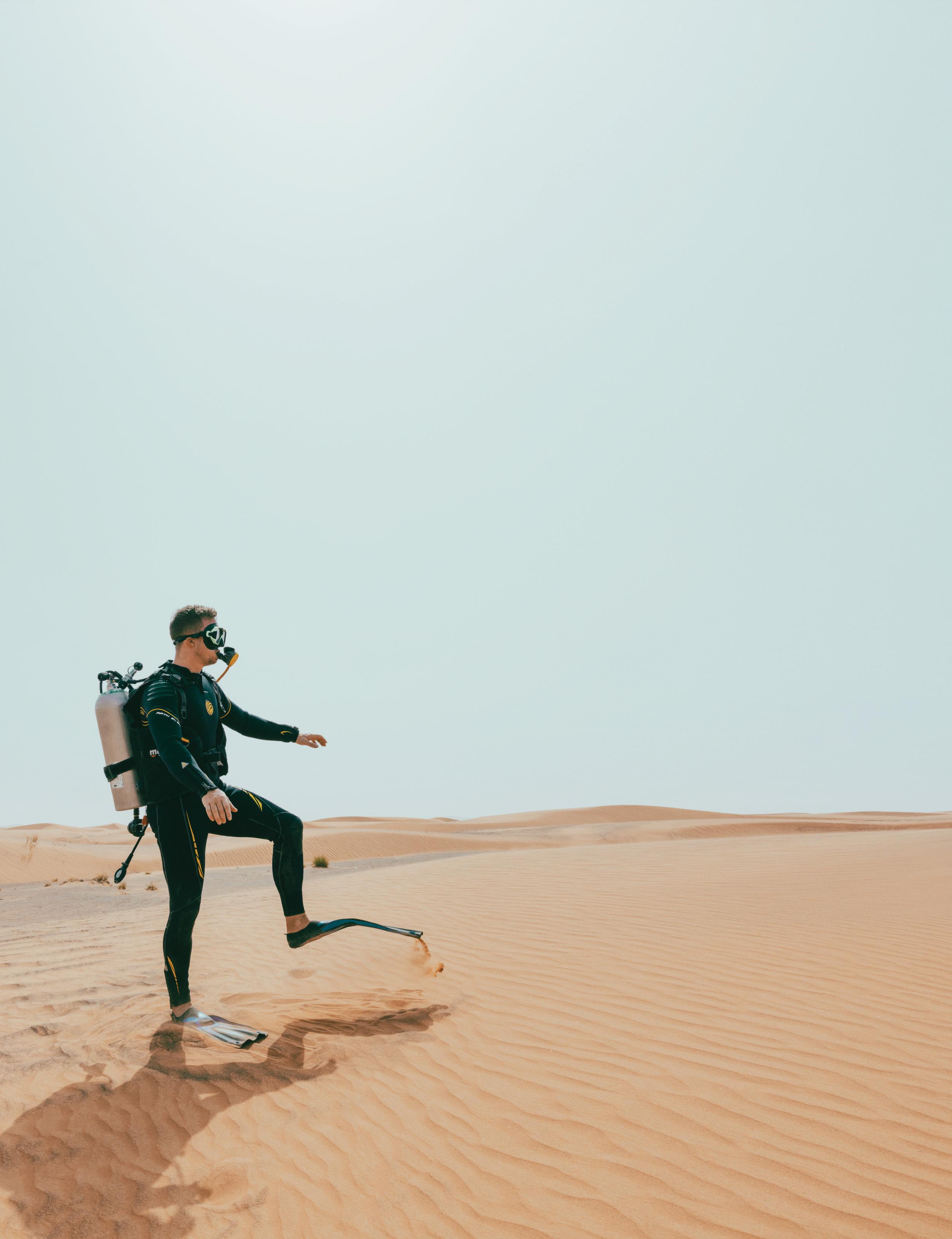






PIONEERING FIRE SAFETY: NAFFCO GROUP’S VISION FOR THE FUTURE
NAFFCO GROUP, with a 33-year legacy of innovation, continues to set the bar for safety, sustainability, and AIdriven solutions across the world


WHY MENTORSHIP MATTERS
In a rapidly evolving workplace, the roles of mentorship and generational diversity are more crucial than ever to drive innovation
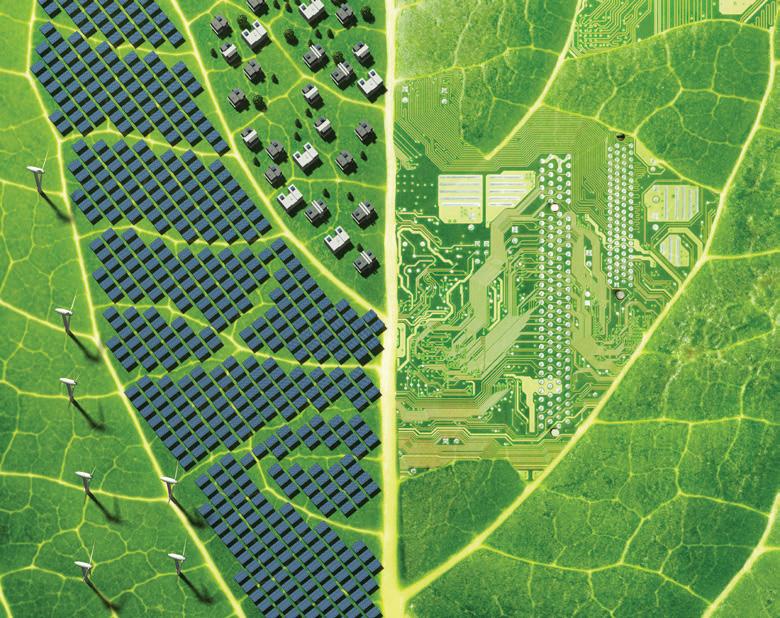
TOP TECH TRENDS IN 2025
From the growing influence of AI to the shift towards energy sustainability: developments we can expect to see unfold during the year

BARACK OBAMA , 44TH PRESIDENT OF THE UNITED STATES
FROM WASTE TO VALUE: Tadweer Group’s Ali Al Dhaheri delves deeper into the group’s ambitious plans to revolutionise waste management and support the UAE’s net-zero goals
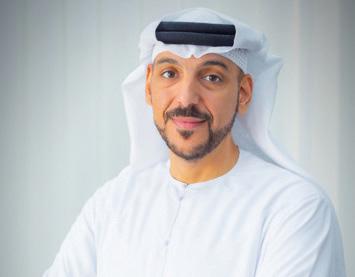

LEADING WITH EXCELLENCE
Meet the 2024 L’Oréal-UNESCO For Women in Science winners whose work is reshaping the future of science
HEAD OFFICE: Media One Tower, Dubai Media City, PO Box 2331, Dubai, UAE, Tel: +971 4 427 3000, Fax: +971 4 428 2260, motivate@motivate.ae
DUBAI MEDIA CITY: SD 2-94, 2nd Floor, Building 2, Dubai, UAE, Tel: +971 4 390 3550, Fax: +971 4 390 4845
ABU DHABI: PO Box 43072, UAE, Tel: +971 2 677 2005, Fax: +971 2 677 0124, motivate-adh@motivate.ae
LONDON: Acre House, 11/15 William Road, London NW1 3ER, UK, motivateuk@motivate.ae
Cover: Freddie N Colinares
Editor-in-chief Obaid Humaid Al Tayer
Managing partner and group editor Ian Fairservice
Chief commercial officer Anthony Milne anthony@motivate.ae
Publisher Manish Chopra manish.chopra@motivate.ae
EDITORIAL
Group editor Gareth van Zyl Gareth.Vanzyl@motivate.ae
Editor Neesha Salian neesha@motivate.ae
Senior feature writer
Kudakwashe Muzoriwa Kudakwashe.Muzoriwa@motivate.ae
Senior art director Freddie N. Colinares freddie@motivate.ae
PRODUCTION
General manager – production S Sunil Kumar
Production manager Binu Purandaran
Production supervisor Venita Pinto
SALES & MARKETING
Digital sales director
Mario Saaiby mario.saaiby@motivate.ae
Group marketing manager Joelle AlBeaino joelle.albeaino@motivate.ae
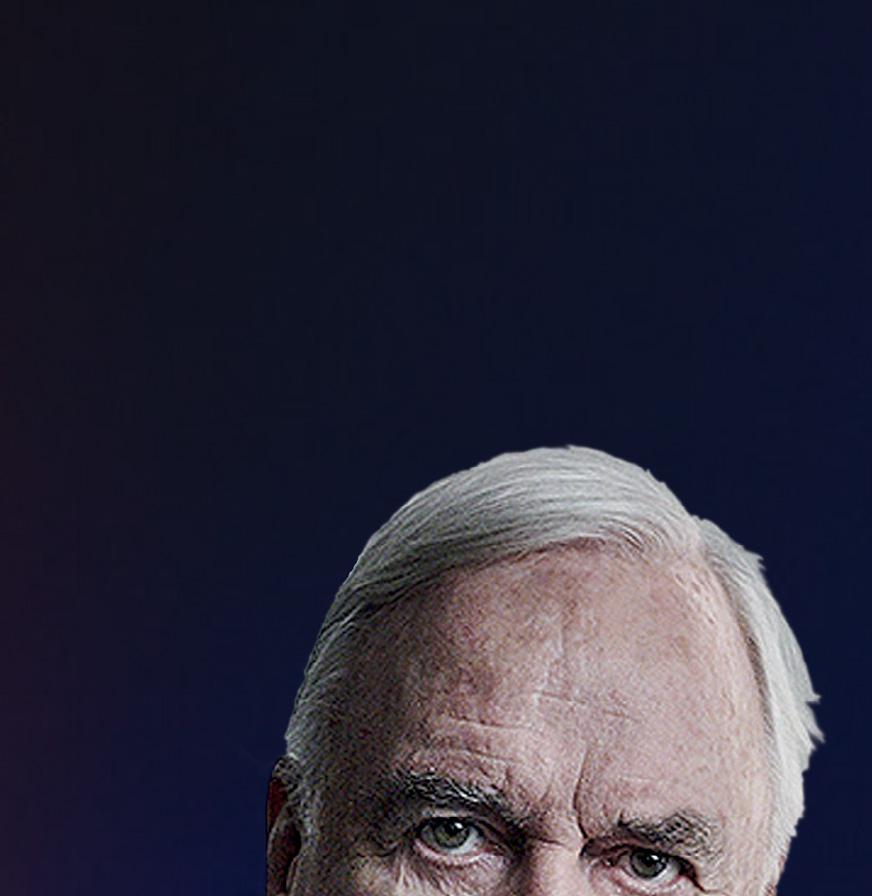

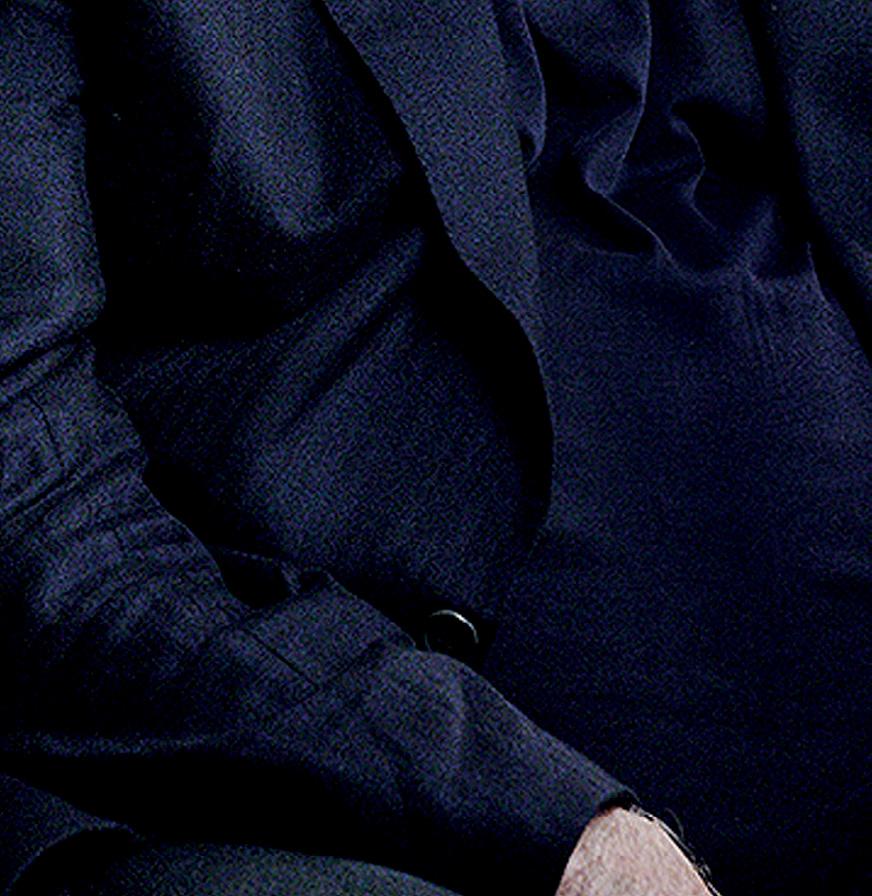


BOOK NOW AN EVENING WITH 25 JANUARY 2025 DUBAI OPERA

DOORS OPEN: 3:30 PM SHOW STARTS: 5:00 PM





GENERATIONS POTENTIAL ACROSS UNLOCKING
IN A RAPIDLY EVOLVING WORKPLACE, THE ROLES OF MENTORSHIP AND GENERATIONAL DIVERSITY ARE MORE CRUCIAL THAN EVER TO DRIVE INNOVATION AND LONG-TERM SUCCESS

entorship, as traditionally understood, evokes images of a wise elder imparting knowledge to an eager novice. A one-way street where experience flows downhill, a mentor has been seen as a guiding hand, navigating the less experienced through the labyrinth of their careers. Yet, as the workplace evolves and the generational gap widens, this notion of mentorship is increasingly outdated.
The role of today’s mentor is far more dynamic: mentorship is no longer a one-sided relationship but a two-way bridge — spanning the divides of age, experience, and cultural backgrounds. This reciprocal model of mentorship, where both mentor and mentee stand to gain, is gaining traction and for good reason.
Research from PwC emphasises that mentorship today is about mutual benefit. Today’s mentors are finding themselves on the receiving end of fresh perspectives from mentees. Industry trends, technological innovations, and the fast-evolving culture of work, are areas where early in career professionals excel, often reigniting the curiosity and enthusiasm of their older counterparts.
This exchange is not just about staying relevant. For the seasoned professional, being challenged by new ideas forces a shift in conventional thinking, encouraging both innovation and adaptability. In an era where change is the only constant, those who mentor are finding that they are learning just as much as they teach. The mentor is no longer simply the expert; they are part of a continuous cycle of learning. The mentee, far from being a passive recipient of wisdom, plays an active role in this dynamic, offering insights into evolving technologies, societal trends, and emerging markets.
Moreover, this reciprocal nature fosters empathy and understanding within organisations. Mentees, often from diverse backgrounds, bring fresh perspectives shaped by different cultures, genders, and generations. For mentors, this provides a window into viewpoints that may not align with their own, pushing them to develop a more nuanced and empathetic approach to leadership and decision-making.
INCLUSION – A BUSINESS IMPERATIVE
In today’s rapidly changing workplace, diversity is no longer a buzzword; it is a necessity. As companies strive to become more inclusive, mentorship is emerging as a critical driver of this success. Increasingly, mentorship is viewed through the lens of diversity and inclusion, with particular emphasis on generational diversity.
Generational exchanges — especially between older and younger employees — are key to creating a workplace that thrives on collaboration
THE ROLE OF TODAY’S MENTOR IS FAR MORE DYNAMIC: MENTORSHIP IS NO LONGER A ONE-SIDED RELATIONSHIP BUT A TWOWAY BRIDGE — SPANNING THE DIVIDES OF AGE, EXPERIENCE, AND CULTURAL BACKGROUNDS.”

across demographics. These interactions are not only beneficial for the individuals involved but also contribute to a more inclusive and innovative organisational culture. After all, in a globalised world where teams are made up of people from varied backgrounds, age, gender, and ethnicity, the ability to understand and collaborate across these lines is crucial to long-term success.
Yet, generational diversity often remains an overlooked aspect of diversity, equity, and inclusion (DEI) strategies. While many organisations focus on gender and ethnicity, fewer than 10 per cent actively consider age diversity as a core part of their DEI initiatives. Even among those that do, the approach often downplays
Virginie Hollebecque
Supplied
IT IS ABOUT DEVELOPING EMOTIONAL INTELLIGENCE, ACTIVE LISTENING, AND THE POWER OF CONNECTING TO PEOPLE IN WAYS THAT ARE AUTHENTIC AND MEANINGFUL. MENTORSHIP, WHEN DONE RIGHT, HELPS BUILD WHO WE ARE, NOT JUST AS INDIVIDUALS, BUT AS INTERCONNECTED PARTS OF A THRIVING PROFESSIONAL ECOSYSTEM.

generational differences, rather than harnessing them as a strength.
This is a missed opportunity.
Today’s workforce is more age-diverse than ever, with seasoned team members bringing institutional knowledge and strategic insight, while younger professionals offer new expertise with technology and innovative thinking. Together, these groups form a potent blend of experience and fresh ideas, driving both problem-solving and innovation. To downplay these differences, rather than celebrate them, is to lose out on the immense value of a multigenerational workforce.
BUILDING BRIDGES, NOT WALLS
I often liken mentorship to a bridge. A bridge, by definition, provides passage over obstacles that would otherwise be difficult or impossible to cross. Mentorship does precisely that — bridging ideas and people, bridging experiences and cultures, and creating pathways for career development. It is about developing emotional intelligence, active listening, and the power of connecting to people in ways that are authentic and meaningful. Mentorship, when done right, helps build who we are, not just as individuals, but as interconnected parts of a thriving professional ecosystem.
The reciprocal nature of mentorship, when combined with a robust focus on generational diversity, offers a powerful tool for businesses looking to stay competitive in an ever-changing world. Companies that embrace this two-way dynamic, and who actively incorporate age diversity into their DEI strategies, will find themselves at the forefront of innovation, adaptability, and success.
In the end, mentorship is no longer just about the wisdom of the few guiding the many. It is about building bridges that span generations, creating spaces where diverse perspectives come together to foster learning, growth, and collaboration. This, more than anything, is what will define the future of successful organisations. L
The writer is VP and EMEA leader at Ciena

‘POWER OVER’ VERSUS ‘POWER WITH’
HOW LEADERS AND MANAGERS CAN CULTIVATE A HEALTHIER, MORE INCLUSIVE WORKPLACE
In a world defined by rapid change, uncertainty, and interconnected challenges, the time has come to fundamentally rethink leadership. Rooted in the militaristic and industrial paradigms of the past, traditional ‘power over’ leadership, which emphasises control, authority, and hierarchy, is increasingly inadequate for addressing the complex and dynamic needs of today’s organisations and societies.
The hierarchical ‘power over’ approach centralises authority, leaving little room for input or creativity from those outside the leadership circle. It stifles innovation, limits employee engagement, increases absenteeism through stress and burnout, and drives unsustainable, exploitative short-term practices which undermines both organisation and planetary health.
Satya Nadella, CEO of Microsoft, who has been behind that company’s culture transformation during the past decade said, “Don’t be a know-itall, be a learn-it-all,” echoing that shift from ‘power over’ to ‘power with.’ The ‘power over’ approach pushes people into the ‘play to dominate’ space and when leaders spend too much time there, it creates a corrosive energy and a toxic culture. ‘Power-with’ leadership is a transformative alternative that fosters collaboration, mutual respect, and shared purpose, creating environments where individuals and teams can thrive. Coupled with the application of “secure base principles”, a framework where leaders provide safety, support, and inspiration, it enables individuals to be accountable to step out of their comfort zones and achieve their full potential.
In this ‘play to thrive’ space, productive energy is released and potential, creativity, and innovation

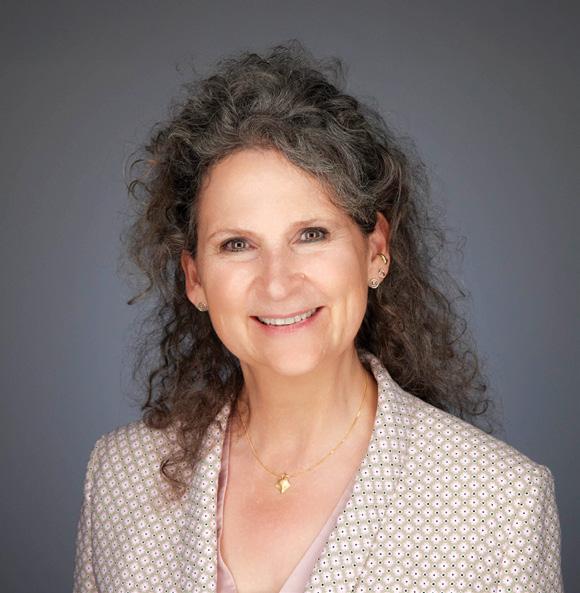
are unleashed on a profound level. The concept complements power-with leadership by creating environments where individuals feel free to experiment, take risks, and explore new ideas. When people feel safe, valued, and supported, they are more likely to engage deeply, think creatively, and innovate boldly.
‘Power with’ leadership offers a more adaptive, inclusive, and ethical approach. Grounded in collaboration, co-creation, and trust, it recognises that no one person has all the answers, and leverages diverse perspectives. This inclusive environment fosters innovation and enables teams to address complex challenges creatively. Rather than micromanaging, ‘power with’ leaders delegate responsibility and trust their teams. This empowerment leads to increased motivation, engagement, and a shared sense of purpose. By fostering a culture of openness and collaboration, ‘power with’ leaders enable their organisations to adapt to change more effectively, building resilience in the face of uncertainty.
BENEFITS OF ‘POWER WITH’ LEADERSHIP
As mentioned, there are clear benefits of the ‘power with’ leadership approach for individuals, organisations and society.
FOR INDIVIDUALS:
1. Enhanced wellbeing: Employees in power-with environments experience lower stress levels and higher job satisfaction, contributing to overall mental and emotional health.
Susan Goldsworthy
Supplied
2. Personal growth: Empowered individuals have opportunities to develop new skills, build confidence, and realise their potential.
3. Diversity and inclusion: By celebrating differences and ensuring equitable participation, power-with leadership fosters a sense of belonging and strengthens team cohesion.
4. Stronger relationships: Trust and mutual respect, hallmarks of ‘power with’ leadership, lead to healthier and more productive workplace dynamics.
FOR ORGANISATIONS:
1. Increased innovation: A collaborative, psychologically safe environment sparks creativity and drives innovation.
2. Higher engagement: Empowered employees are more committed to organisational goals, leading to higher productivity and lower turnover.
3. Agility and resilience: Teams that thrive in the ‘Play to Thrive’ space can adapt quickly to changing circumstances and overcome challenges with greater ease.
4. Sustainable success: Ethical and inclusive leadership practices create long-term value for organisations and their stakeholders.
FOR SOCIETY AND THE PLANET:
1. Sustainable decision-making: ‘Power with’ leaders prioritise practices that benefit both people and the planet, such as adopting circular economy models and reducing waste.
2. Community building: By fostering equity and inclusion, these leaders strengthen communities and promote collective action to address global challenges like poverty and climate change.
3. Alignment with global goals: ‘Power with’ leadership supports the United Nations Sustainable Development Goals (SDGs), contributing to a more equitable and sustainable world.
4. Regenerative practices: ‘Power with’ leadership encourages regenerative approaches that restore and replenish natural systems, moving beyond sustainability to actively healing the environment and fostering harmony with nature.
STEPS TOWARD ‘POWER WITH’ LEADERSHIP
Transforming leadership from power over to powerwith requires a conscious choice, constructive challenge and courageous communication. Here are seven steps leaders can take to embrace this paradigm:
1. Cultivate self-awareness: Reflect on your leadership style and identify areas where control and dominance may hinder collaboration. Embrace humility and openness to feedback.
2. Foster psychological safety: Create environments where team members feel safe to share ideas, take risks, and voice concerns without fear of judgment.
LEADERSHIP IS NOT ABOUT EXERTING POWER OVER OTHERS; IT IS ABOUT EMPOWERING, INSPIRING, AND CO-CREATING.”
3. Empower others: Delegate responsibilities, encourage autonomy, and provide the resources and support needed for growth.
4. Model collaboration: Involve teams in decision-making processes and demonstrate trust in their abilities and contributions.
5. Commit to inclusion and equity: Address systemic barriers and ensure equal opportunities for all team members, fostering a diverse and inclusive culture.
6. Embed sustainability: Align organisational goals with environmental, social, and governance (ESG) principles to ensure long-term success and planetary health.
7. Celebrate success and learn from failure: Recognise achievements and view setbacks as opportunities for growth and learning.
A CALL TO ACTION
Leadership is not about exerting power over others; it is about empowering, inspiring, and co-creating. The shift to ‘power with’ leadership is not just a strategic choice but a moral imperative. In a world facing unprecedented challenges, the need for leaders who prioritise collaboration, trust, and sustainability has never been greater.
By embracing this transformative approach, we can unlock the potential of individuals and teams, drive meaningful innovation, and create a future where both people and the planet flourish. L
REFLECT ON YOUR LEADERSHIP STYLE AND IDENTIFY AREAS WHERE CONTROL AND DOMINANCE MAY HINDER COLLABORATION. EMBRACE HUMILITY AND OPENNESS TO FEEDBACK
The writer is a contributor to Leading the Sustainable Business Transformation: A Playbook from IMD, and author of Care Dare Share: The Secure Base Coach out now.

Building the AI workforce
HOW SAUDI ARABIA AND THE UAE ARE PIONEERING DIGITAL WORKER INNOVATIONS FOR GLOBAL EXPORT
Tthe global race to create the most qualified artificial Intelligence (AI)-powered digital worker is overtaking the world of technology. Silicon Valley continues as a dominant leader in the new space of ‘agentic AI’, but Saudi Arabia and UAE, as part of a wider Middle East region, are making their presence known. With adequate funding, strategic governmental backing and intense focus on economic diversification, the two nations are making their way to the frontlines of creation and deployment of digital workers domestically. They aim to bridge their expertise gap while keeping an eye on the opportunity to export such digital talent internationally.
AGENTIC AI: THE LATEST EVOLUTION
Agentic AI is a type of artificial intelligence that works on its own
to fulfill specific aims, unlike traditional and conversational AI models which react to user input and follow prescribed instructions. Agentic AI can make choices and adapt actions based on feedback from its human developers. Pair that with the goals of Saudi Arabia’s Vision 2030 and the UAE’s National AI Strategy 2031 of reducing oil dependency and enhancing tech-based economies with AI and you see the power and potential influence of this emerging technology.
ACCESS AND INFRASTRUCTURE NEEDS
In order to develop and deploy advanced AIpowered digital workers, there must be access to adequate compute power, coupled with a set
SILICON VALLEY CONTINUES AS A DOMINANT LEADER IN THE NEW SPACE OF ‘AGENTIC AI’, BUT SAUDI ARABIA AND UAE, AS PART OF A WIDER MIDDLE EAST REGION, ARE MAKING THEIR PRESENCE KNOWN.
of culturally fit large language models (LMMs). Saudi Data & AI Authority’s (SDAIA) new big language model (LLM), ‘Allam’ is set to drive AI advancements in several industries within Saudi Arabia. Similarly, the UAE recently launched an updated version of its Falcon LLM, positioning it as one of the most sophisticated AI models globally. Developed by the Technology Innovation Institute, Falcon is designed for applications from language processing to advanced data analytics, further enhancing UAE’s position as a global leader in AI innovation. These LLMs, along with other comparable projects, are not only technological improvements but proof of the region’s increasing capacity to create AI systems and instruments for global distribution. On the compute power side, Saudi Arabia and the UAE are investing equally huge sums into building compute capacity with GPUs, which is critical for large-scale AI models. Saudi Arabia is putting considerable resources into developing semiconductor and supercomputer industries through the creation of ‘Alat’, which has pledged to create up to 39,000 jobs generating $9.3bn by 2030. The UAE is simultaneously investing massive funds into supercomputing technology needed for models like Falcon.
By employing digital workers powered by AI, the two counties will bridge the skill gaps and reduce dependency on foreign expertise while improving efficiency in areas such as data analytics and customer care. These infrastructure investments by both countries ensure local demand for processing requirements of AI solutions can be adequately met, but more importantly, they significantly improve their ability to export AI solutions globally.
NEED ON THE GLOBAL STAGE
The World Economic Forum reports that the UAE needs to upskill 45 per cent of its workforce for digital transformation, and Saudi Arabia is in a similar position. Utilisation of AI digital workers addresses the skill shortages while also lowering need for overseas talent and boosting output across areas like customer service and data processing. Digital workers driven by AI transform essential sectors in local and global markets. In the public sector, the ‘AI
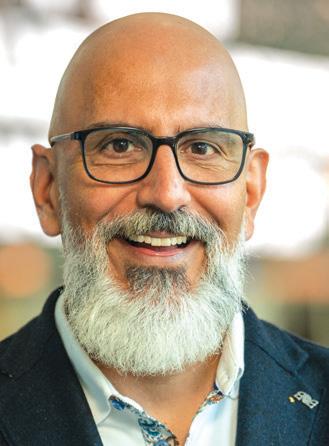
Yousef Khalili
Government Concierge’ digital assistant can handle bureaucratic processes (like passport renewal) and municipal services, increasing productivity of public workers. In tourism, AI agents can assist booking flights, hotels and excursions 24/7, improving traveller experience and reducing or eliminating call centre waiting times.
For healthcare, AI agents can process patient interactions executing admin tasks, allowing healthcare workers to dedicate more time to direct care. With certified AI agents in place, tele-health becomes more autonomous with digital ‘doctors’ providing basic treatments alongside diagnostic services.
FROM IMPORTING HUMAN TALENT TO EXPORTING DIGITAL TALENT
Exporting AI-powered digital workers enhances the Middle East’s geopolitical influence. Neighbouring nations would benefit from adopting technologies developed locally and deemed culturally ‘fit’. Countries like Jordan and Egypt have skilled AI and digital human talent hungry for innovation. Additionally, global players PwC, Accenture and Deloitte have established centres of excellence in the region.
SAUDI ARABIA IS PUTTING CONSIDERABLE RESOURCES INTO DEVELOPING SEMICONDUCTOR AND SUPERCOMPUTER INDUSTRIES THROUGH THE CREATION OF ‘ALAT’, WHICH HAS PLEDGED TO CREATE UP TO 39,000 JOBS GENERATING $9.3BN BY 2030
As Saudi Arabia and the UAE work to address their talent gaps, they are poised to position themselves as exporters of AI-powered digital workers. This shift would change the Middle East from a consumer of high-tech solutions to a serious global provider of cuttingedge AI technology. This evolution lessens dependency on overseas expertise and cultivates native talent. More importantly it allows these nations to seize a portion of the growing AI market and VC capital flowing into AI. The UAE aims for AI to account for up to 20 per cent of its non-oil exports by 2030, and Saudi Arabia seeks to rank among the top 15 global AI economies by the same year. Agentic AI is the path to meet these goals. L
The writer is the global chief transformation officer and CEO MEA at Quant.
OF A PRODUCTIVE PLANTING THE SEEDS
FUTURE

THE UAE IS INVESTING IN EDUCATION AND TECHNOLOGY TO BUILD A SKILLED WORKFORCE FOR FUTURE INNOVATION
Economic productivity can be defined in a number of ways, but it usually boils down to ‘output per worker’ — to doing more with less. It’s what determines the overall standard of living an economy can maintain and it relies on the successful interplay of many different things. For example, one of the great innovations of the late industrial revolution, the Haber-Bosch Process for the synthesis of ammonia, didn’t come from just one idea. To make it practicable, there also had to be other breakthroughs in engineering, manufacturing and the use of catalysts Also, although the ability to manufacture nitrogen fertilisers enabled a huge increase in crop yields, which has fed hundreds of millions of people, it’s not been without drawbacks. Overuse or inappropriate use of fertilisers also has links to pollution and climate change.
Getting high productivity right, then, is a challenge. At the same time, as birth rates decline in some parts of the world, and sustainable business practices become paramount, there will be pressure on economies to become more productive. That is, they will have to find new ways of doing more, and more new things, with less. For that to be possible, we need high-quality education for everyone in the workforce. There is, after all, a direct correlation between higher levels of education and higher economic productivity.
A GARDEN OF IDEAS
Ensuring that a population is highly educated is like ensuring a sustainable food supply. It’s essential, and it requires a similar approach: intellectual knowledge and skills need to be encouraged to grow; they require just the right level of stimulus at the right time; and they do best in a vibrant intellectual ecosystem in which genuinely new ideas can take root and cross-pollinate.
Gulf states already understand all of this, of course — hence the investment in transnational education and in postgraduate education. It’s part of the global trend of using the best education providers, irrespective of where they are based, together with the most innovative research and the latest educational tools to boost educational attainment.
In the Middle East, the UAE is the country with the most students involved in transnational education at postgraduate level. The majority of UAE students engage in distance, flexible or distributed learning that is provided by a local organisation in collaboration with an international partner. Around 92 per cent of UAE students have access to more than one form of distance learning provision and 86 per cent of students are confident with that approach.
Many postgraduates in the GCC focus on professional development and study subjects such as banking and finance, fintech, Islamic finance, or global banking, particularly as part of the Vision 2030 growth strategy. The postgraduate degrees are designed to be flexible, and many are micro-credentials that can be studied alongside work and family commitments. In the garden analogy, micro-credentials are like a helpful shower of rain in the growing season. They allow students to fill in knowledge gaps and keep up-to-speed with new developments.
TECHNOLOGICAL SUPPORT
That access to the right course, at the right level of specialisation, at the right time, is being made much easier by new technology. For example, LIBF’s parent organisation, IU International University of Applied Sciences, has an AI ‘learning buddy’, called Syntea, that acts as a 24/7 online tutor. Some students using it have been able to cut the amount of time needed to finish their degree by over a quarter, without any loss in depth of understanding. One of the reasons for that, researchers say, is that the provision is highly personalised. Another is that the answers students receive are verified and expanded by expert human tutors.
As this suggests, the best educational outcomes still require many, careful inputs. Yes, technology makes it much easier to provide instant access to excellent educational provision, but that education also requires space for interpersonal discussion, for access to research experts and for dialogue with industry — particularly at the postgraduate level. An AI tutor can help a student work through technical questions very efficiently – and
THE POSTGRADUATE DEGREES ARE DESIGNED TO BE FLEXIBLE, AND MANY ARE MICRO-CREDENTIALS THAT CAN BE STUDIED ALONGSIDE WORK AND FAMILY COMMITMENTS. IN THE GARDEN ANALOGY, MICRO-CREDENTIALS ARE LIKE A HELPFUL SHOWER OF RAIN IN THE GROWING SEASON.”
in a very personalised way — but only a human tutor can put the knowledge acquired into the right business and cultural context. Students studying finance, for example, need access to lessons given by former practitioners who not only understand the technical details of the subject but also know how it works in practice.
INVESTMENT IN HUMAN CAPITAL
Education providers exist to help economies make the most productive use of their human capital for the good of all. That requires partnerships between institutions, policy makers, researchers and industry experts so that truly effective and forward-looking solutions to a country’s educational needs can be found.
Graduate and postgraduate education is essential for innovative thinking — the sort of innovative thinking that will be needed to tackle some of the many challenges ahead, including the global shifts in demographics and the demands of sustainability.

As is increasingly clear, and Vision 2030 recognises, there are some problems people can only hope to solve when societies ensure that the best of all their good ideas really grow and blossom. L
The writer is vice-chancellor and chief executive at The London Institute of Banking & Finance (LIBF)
Steve Hill
NAFFCO GROUP
LEADS THE WORLD AS
A TOTAL SOLUTIONS PROVIDER
OVER THE LAST 33 YEARS, UAE-HEADQUARTERED NAFFCO GROUP HAS GROWN INTO A GLOBAL LEADER IN FIRE SAFETY, COMBINING INNOVATION, SUSTAINABILITY, AND EXCELLENCE TO PROTECT COMMUNITIES WORLDWIDE
WORDS GARETH VAN ZYL | PHOTOS SUPPLIED
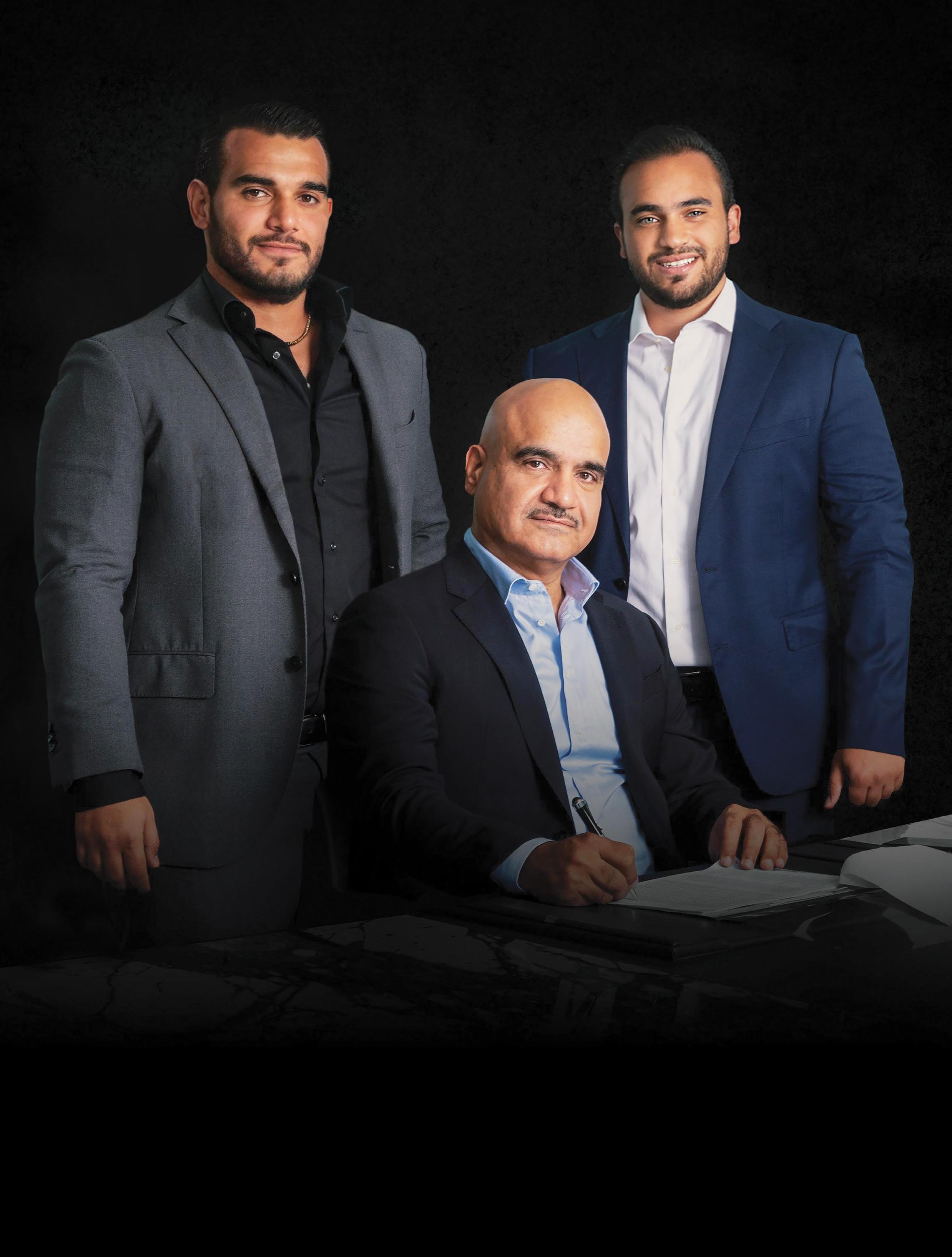
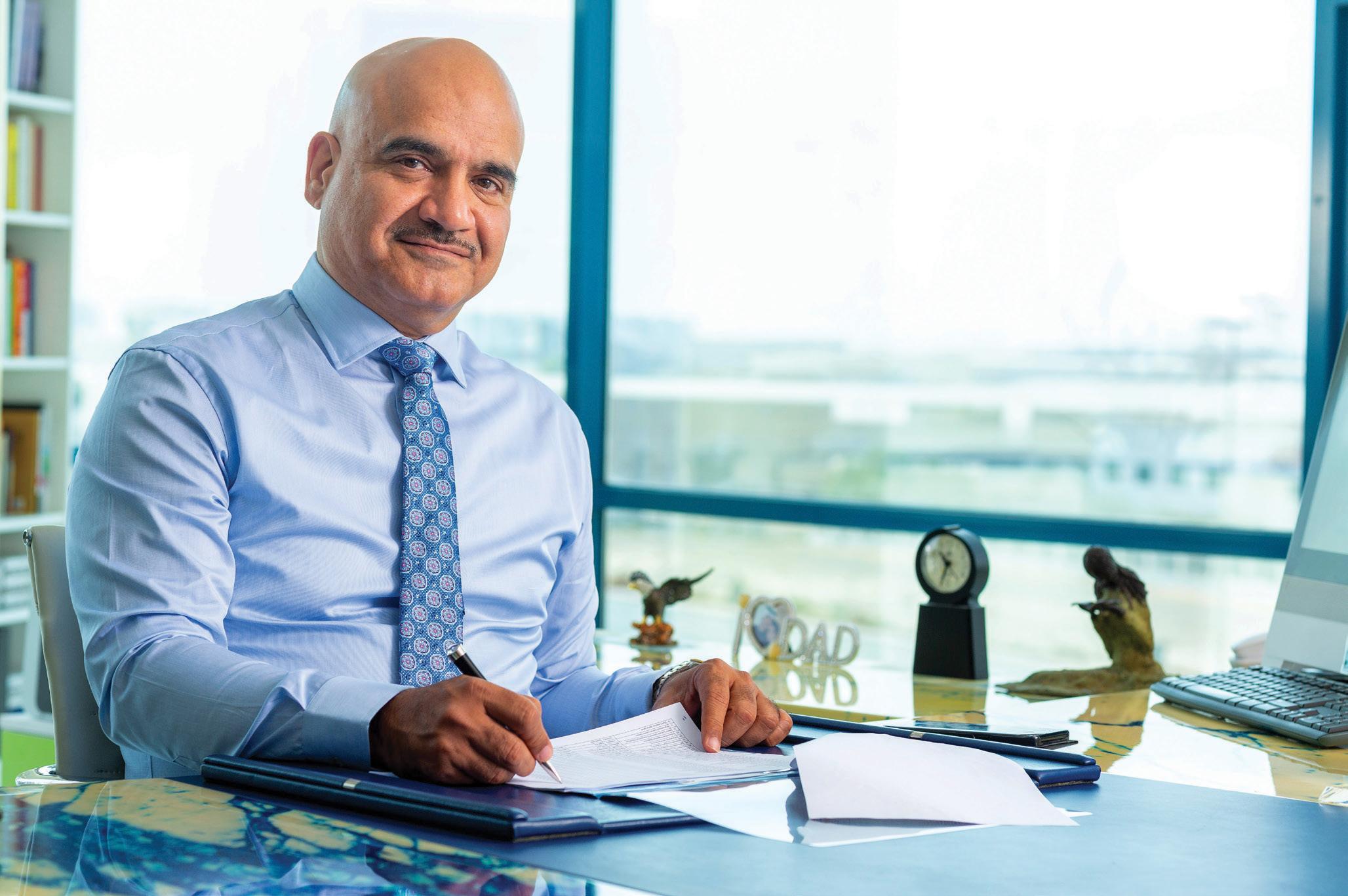
INCEPTION AND GROWTH OF NAFFCO GROUP
The year 1991 marked the beginning of NAFFCO Group. Starting with just 15 employees and a modest facility manufacturing basic fire extinguishers, NAFFCO Group now stands as a global powerhouse as the world’s No. 1 total solutions provider in the fire and safety space.
With over 15,000 employees and state-of-the-art facilities spanning 10.5 million square feet, the company’s journey is a masterclass in transformation.
“At our inception, it was about saving lives,” recalls chief executive officer Eng. Khalid Al Khatib.
But Khalid’s journey into fire safety started long before NAFFCO Group’s inception.
“From the beginning, we focused not just on manufacturing products but on building trust and delivering solutions that truly protect lives,” he says
From pioneering high-pressure CO2 cylinder manufacturing in 1998 to redefining UAE safety standards in 2004, NAFFCO Group’s evolution exemplifies adaptability and foresight.
Khalid’s leadership style embraces grit, efficiency and innovation. “Success is more than innovation,” he states. “It’s persistence through setbacks and the determination to thrive under pressure.”
NAFFCO Group’s innovative spirit has led to custom-engineered safety solutions catering to diverse sectors — from healthcare to high-rise buildings. Today, its products and services range from fire alarms and sprinklers to AI & IOT-powered safety systems.
Over the years, NAFFCO Group has contributed to iconic projects such as the Burj Khalifa, which required designing a gravity-fed sprinkler system unique to the world’s tallest structure. The Dubai Metro stands as another testament to the company’s capabilities, integrating comprehensive fire detection and suppression systems for the transport network.
NAFFCO Group’s impact extends beyond borders too.
In Bangladesh, the company modernised fire safety across 3000 factories, significantly reducing fire-related fatalities.
In Senegal, their deployment of turnkey fire safety solutions elevated industrial safety standards, benefit economies, and protecting lives.
Their contributions also include large-scale industrial complexes, international airports, oil, gas industries and marine projects.
Khalid notes that every environment poses unique challenges, but innovation has always been at the core of NAFFCO Group’s approach. From addressing rust issues in conventional piping by replacing them with high-density polyethylene pipes to developing advanced firefighting vehicles for critical applications, the company continues to push boundaries.
Khalid credits much of NAFFCO Group’s growth to the unwavering commitment of its team.
“From a single facility to a global operation of 15,000 employees serving over 100 countries, our progress is a testament to resilience, adaptability, and a relentless pursuit of excellence,” he adds, reflecting on the company’s journey as world’s leading producers and suppliers of top-tier firefighting equipment, fire protection systems, fire alarms, security and safety engineering
Eng. Khalid Al Khatib, CEO of NAFFCO
systems. NAFFCO Group has positioned itself as a one-stop total solutions provider, catering to diverse industries worldwide.
LEADERSHIP TRANSITION
After establishing itself as a global leader, the baton of leadership at NAFFCO Group is transitioning. This is as Khalid Al Khatib is increasingly entrusting the future of his company to his sons, Ahmed, and Ali.“Ahmed and Ali have been part of the journey from the beginning, contributing significantly to NAFFCO Group’s growth,” says Khalid.
Ahmed Khalid Al Khatib, group managing director at NAFFCO Group, with over a decade of experience, plays a pivotal role in managing operations across the NAFFCO Group. He is transforming global safety standards through advanced engineering, innovative practices, and a commitment to sustainability. With expertise cultivated over the past decade, Ahmed seamlessly integrates high-tech safety systems with efficient manufacturing processes, driving strategic growth and establishing new facilities in key markets such as the UAE, USA, KSA, Qatar, and Egypt.
Ali Khalid Al Khatib now leads as Group Managing Director, with a focus on driving global expansion and overseeing vehicles manufacturing & worldwide operations. Under his watch, NAFFCO Group has strengthened its foothold in over 100 countries across 5 continents.
His efforts have been instrumental in aligning NAFFCO Group’s offerings with local regulations while maintaining its commitment to exceeding global standards.
The brothers’ leadership has introduced a renewed energy into NAFFCO Group. “It’s inspiring to work alongside a new generation of leaders who share the same passion for innovation and excellence,” says Eng. Khalid.

Leading the world in providing complete unit responsibility as per NFPA
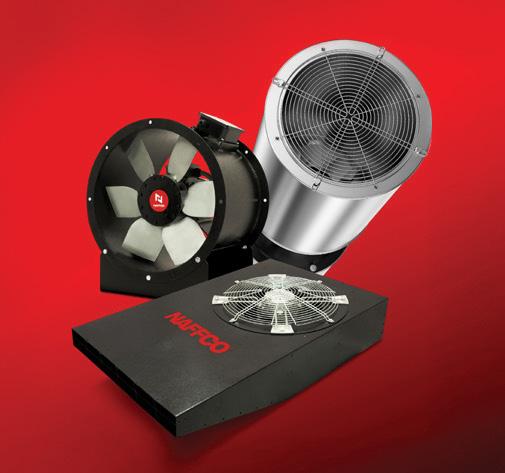



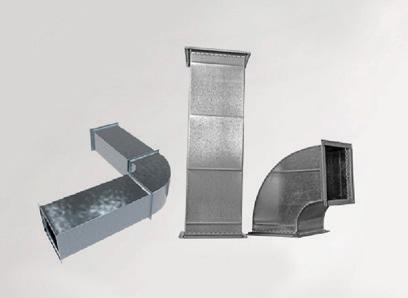


OVER THE YEARS, NAFFCO GROUP HAS CONTRIBUTED TO ICONIC PROJECTS SUCH AS THE BURJ KHALIFA , WHICH REQUIRED DESIGNING A GRAVITY-FED SPRINKLER SYSTEM UNIQUE TO THE WORLD’S TALLEST STRUCTURE
Under Ahmed’s leadership, NAFFCO Group has pioneered cutting-edge solutions across diverse sectors, including firefighting equipment, fire alarm systems, fire doors, security solutions, flow control, modular systems, cladding, smoke management, and oil and gas safety. Notable innovations include IoT-enabled safety technologies that integrate real-time monitoring, predictive maintenance, and automated alerts, shifting safety management from reactive to proactive. “Through AI integration, we are creating solutions that anticipate and address issues before they escalate,” Ahmed shares.
Ali’s contributions to expanding NAFFCO Group’s manufacturing capabilities have been equally transformative. With new facilities in Saudi Arabia, Australia, the UAE, USA and India, the company is poised to meet growing global demands. “Scaling up is not just about numbers; it’s about maintaining quality at every step,” Ali explains. The establishment of a 1.9 million sq. ft. manufacturing plant for ARFF vehicles, Firefighting trucks & Ambulances underscores this commitment. “These vehicles are not just products; they’re lifelines in critical environments,” Ali adds.
NAFFCO GROUP’S SMOKE MANAGEMENT SYSTEMS
Smoke Detectors and Sensors
Smoke Extraction Fans
Fire/Smoke Damper
Fire Rated and G.I. Duct
Starter Panel and Smoke Control Station
Smoke Vents
Fixed and Automatic Fire and Smoke Curtain

Eng. Khalid reflects on this transition with pride. “The foundation we built is strong, but it’s the vision of the next generation that will take NAFFCO Group to even greater heights,” he says.
GLOBAL EXPANSION AND IMPACT
NAFFCO Group’s global footprint now spans over 100 countries, supported by manufacturing facilities in UAE, UK, US, Australia, Qatar, KSA, Egypt and India. This vast network reflects the company’s commitment to delivering fire safety solutions at a scale unmatched in the industry. “Our mission has always been to ensure safety wherever it’s needed,” says Ali.
“Each manufacturing facility represents our dedication to quality, efficiency, and innovation.” Their flagship facility, a 950,000 sq. ft. ARFF chassis plant, epitomises this ambition, producing custom-built vehicles for critical environments. “We set the benchmark in fire safety,” Ali notes, highlighting their annual production capacity of 5,000 vehicles.
The company’s landmark achievements include the iconic Burj Khalifa, Dubai World Central International Airport, Dubai Metro and Trams, Museum of the Future, Louvre Abu Dhabi, Expo 2020 Dubai, Qatar Metro and many more. With each project posed unique challenges, which were met with bespoke solutions. “For Expo 2020, we integrated safety systems that complemented the event’s futuristic architectural vision,” Ahmed explains.
The commitment to training extends to community outreach. NAFFCO Group’s free certifications for engineers aim to elevate safety standards across regions. “Education is a pillar of safety,” Eng. Khalid explains. “When individuals are informed and skilled, entire communities’ benefit.”
Sustainability is at the heart of NAFFCO Group’s innovations. From developing fluorine-free foam extinguishers to manufacturing high-density polyethylene pipes that eliminate rust and last over 50 years, the company demonstrates its commitment to the environment. Its range of hybrid-electric fire trucks and eco-friendly firefighting foams sets benchmarks in reducing carbon footprints.
OUR MISSION HAS ALWAYS BEEN TO ENSURE SAFETY WHEREVER IT’S NEEDED. EACH MANUFACTURING FACILITY REPRESENTS OUR DEDICATION TO QUALITY, EFFICIENCY, AND INNOVATION.”
PRESTIGIOUS PROJECTS
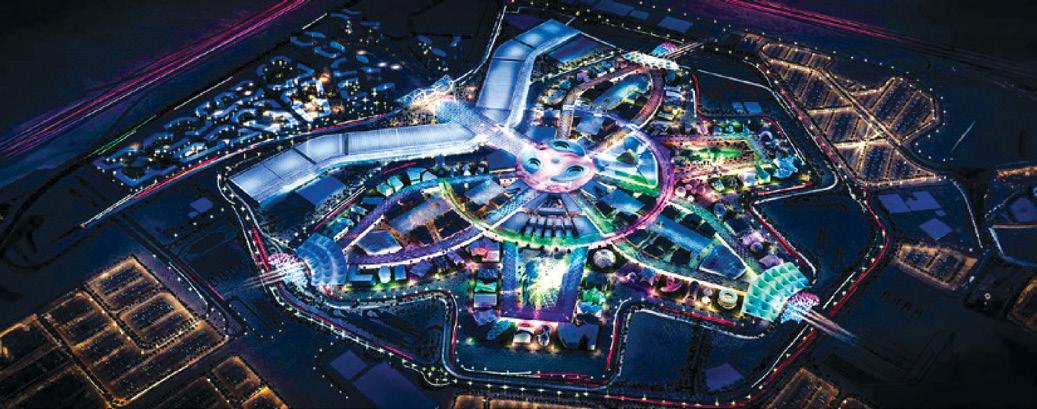


FUTURE VISION AND STRATEGY
Ahmed’s focus on technological leadership extends to advanced training programmes, training over 2,500 professionals annually. The introduction of VR-based training modules has significantly enhanced preparedness for high-risk scenarios, ensuring that trainees are equipped with the skills to make a real difference. Alongside training, Ahmed oversees critical operational areas, including procurement, where efforts are focused on reducing the cost of raw materials without compromising quality.
BURJ KHALIFA DUBAI METRO
EXPO 2020
Ahmed Khalid Al Khatib, group managing director, NAFFCO Group

TOTAL SOLUTIONS PROVIDER



Additionally, Ahmed has driven innovations in smoke management systems, ensuring 99 per cent inhalation efficiency by designing and installing systems tailored to specific requirements. Aftersales support further ensures that these solutions maintain their reliability and effectiveness over time. “Our goal is to deliver comprehensive solutions that empower individuals and safeguard communities,” Ahmed emphasises.
The company’s ambitious expansion, supported by new R&D, will bolster its capacity for projects like flood management vehicles capable of relocating water in disaster-stricken regions. “Innovative solutions are the cornerstone of our growth,” Ali remarks.
Continuous improvement is a core tenet of NAFFCO Group’s philosophy. “We believe in learning from every project and using that knowledge to innovate further,” says Ali. Sustainability initiatives, like eco-friendly fire suppression agents and hybrid rescue vehicles, further reinforce the company’s forward-thinking approach.
NAFFCO Group’s in-house capabilities, from design to production, ensure rigorous quality control. This dedication is reflected in the company’s growing list of accolades for innovation and sustainability. “Every accolade is a reminder of our responsibility to lead by example,” Eng. Khalid says.
The company’s vision extends beyond products and systems to encompass global safety advocacy. By introducing advanced analytics and AI into fire safety systems, NAFFCO Group is shaping a future where technology and human expertise work seamlessly together.
“We’re not just meeting today’s needs; we’re shaping tomorrow’s standards in saving lives, environment and property,” Eng. Khalid concludes. L
Ali Khalid Al Khatib, group managing director, NAFFCO Group
Rapid Intervention Vehicle (RIV)
ARFF 8X8 (Falcon Series) - Custom Built Chassis
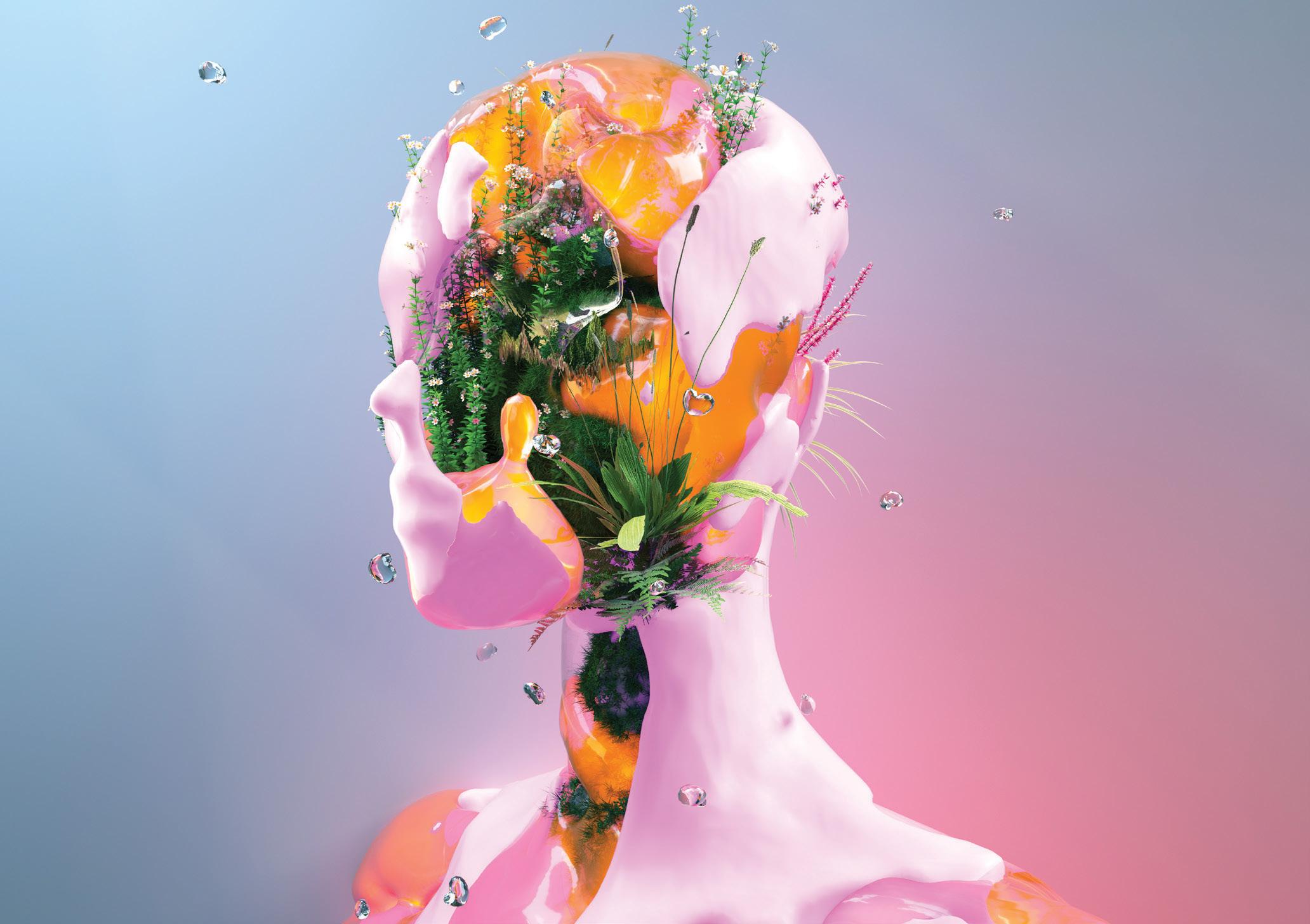
Top tech trends for 2025
FROM THE GROWING INFLUENCE OF AI TO THE SHIFT TOWARDS ENERGY SUSTAINABILITY, HERE ARE THE PREDICTIONS FOR WHAT WE CAN EXPECT THIS YEAR
WPics: Supplied
ith the onset of the new year, technology leaders offer their insights on the key trends and developments that will shape the future of business, security, and AI. Here’s what they predict...
ADRIAN HOBBS , chief technology officer at Core42
Prediction: Groundbreaking developments in AI and focus on sustainability
revolutionise industries from finance to healthcare and beyond. As organisations amass vast amounts of data, the emphasis on stringent data privacy and compliance with evolving data sovereignty regulations will be paramount. Furthermore, as climate change and resource conservation take centre stage, the imperative for energy-efficient and ecofriendly technologies will become undeniable.

In 2025, the Middle East will be at the forefront of technological transformation, driven by accelerated AI integration, a robust focus on data privacy, and a pivotal shift toward energy sustainability. We foresee groundbreaking developments in AI, particularly in generative AI, agentic AI, and multimodal models, which will
ASANKA ABEYSINGHE , chief technology officer at WSO2
Prediction: Acceleration in digital modernisation
This year, platform engineering made significant strides, with organisations trying to build
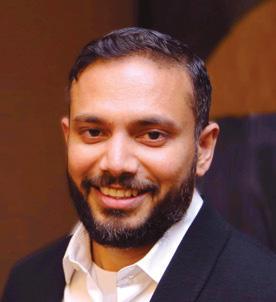
more scalable and efficient systems. Kubernetes continued its rapid adoption as the standard for container orchestration, simplifying deployments across various environments. Large language models (LLMs) became a major trend, with many companies eager to integrate them into every aspect of their operations, sometimes stretching their practical applications.
In 2025, businesses will focus more on value creation by building strong business capabilities and continuing their digital modernisation. Core technologies like API management, integration, and identity and access management will be widely adopted to enhance operations and security. Companies will also prioritise improving developer productivity through internal developer platforms (IDPs) and leveraging SaaS commodity services while striving to create unique differentiators.
Additionally, agentic AI powered by small language models (SLMs) will drive the development of more autonomous systems, with AI strategies increasingly led by chief AI officers (CAIOs) to align with business goals. Hybrid cloud strategies will advance through cloud repatriation and greater Kubernetes adoption, providing enhanced flexibility. Advancements in post-quantum computing will begin to address complex computational challenges, ensuring stronger security and performance as quantum technologies evolve.
JOE DUNLEAVY, global SVP and head of AI Pod at Endava
Prediction: Transformative role of agentic AI

In 2025, agentic AI is set to transform business operations by driving autonomy and transparency across complex workflows, particularly in heavily regulated industries such as healthcare, finance, and energy. Acting as proactive, intelligent partners, these AI agents automate complex processes and adapt in real-time, all under strategic human oversight. This integrated collaboration between AI and people enables organisations to boost efficiency without sacrificing transparency and control, ensuring compliance with robust audit trails. Placing AI at the core of competitive strategy empowers businesses to navigate and anticipate evolving challenges, with people guiding and refining AI’s role for meaningful impact.
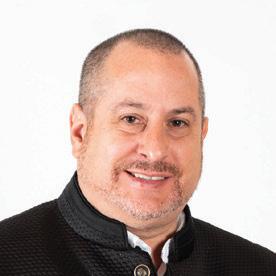
MOREY HABER , chief security advisor
at BeyondTrust
Prediction: Farewell Windows 10
October 2025 will see end-of-life (EoL) announcements for Microsoft Windows 10. Only the most recent machines — those that have both Secure Boot and TPM (trusted platform module) — will be eligible for
Windows 11 upgrades, meaning everyone else will lose access to updates, including security patches. If this sounds like a recipe for vulnerability, that’s because it is. Expect to see a fire sale of obsolete PCs in the second half of 2025. The forced obsolescence will be good news for the hardware market, especially ARM, which will likely see a volume shift to its mobilefriendly processors. Alternative OSes like Linux and Ubuntu will also benefit from organisations trying to minimise replacement costs.
Additionally, previous estimates suggest that where a digital machine would take 300 trillion years to crack 2-megabit RSA encryption, a 4,099qubit quantum computer would only need 10 seconds. This post-quantum reality could be with us by the early 2030s, so we will probably continue to see individuals and organisations urge action on this critical future problem because of the implications it has for societies. We could see criticalinfrastructure organisations, such as regional banks, telcos, and government agencies, form exploratory committees to examine NIST’s post-quantum encryption standards. These will be important first steps on the long road to adoption — a road that is likely to be signposted with many new regulatory standards built around post-quantum cryptography.
WE COULD SEE CRITICALINFRASTRUCTURE ORGANISATIONS, SUCH AS REGIONAL BANKS, TELCOS, AND GOVERNMENT AGENCIES, FORM EXPLORATORY COMMITTEES TO EXAMINE NIST’S POST-QUANTUM ENCRYPTION STANDARDS. THESE WILL BE IMPORTANT FIRST STEPS ON THE LONG ROAD TO ADOPTION — A ROAD THAT IS LIKELY TO BE SIGNPOSTED WITH MANY NEW REGULATORY STANDARDS BUILT AROUND POSTQUANTUM CRYPTOGRAPHY.”
AS CYBERSECURITY MATURITY GROWS, THE INTEGRATION OF FINANCIAL METRICS WITH TECHNICAL SECURITY DATA WILL BECOME CRITICAL.
OMAR AKAR , regional VP for META and CEE at Pure Storage
Prediction: Stricter selection on AI projects as the bubble starts to burst
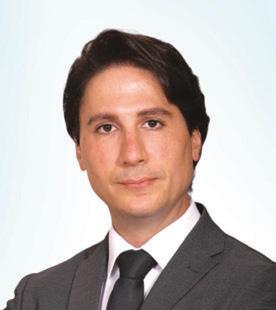
Organisations are going to be more selective on AI projects next year. While the two years since ChatGPT was released have brought a boom in AI investment, I anticipate companies will pull back spending before fatigue sets in. I expect the market will realign — the existing growth could become unsustainable because projects aren’t delivering ROI, and realism will set in. Many organisations aren’t going to be able to convince business leaders that they need to invest in new technology when existing AI or GenAI projects haven’t delivered the promised benefits. While FOMO is still a huge driver for investment, we expect this will be tempered in 2025.
Non-customised AI solutions will fall out of favour in 2025. RAG will become a non-negotiable inclusion for enterprises and will take over as the adopted method of implementing AI. As business leaders demand ROI from the speculative investment they’ve already made in AI, RAG will be crucial for success. This is because it provides a standard approach to customisation, improving results and reducing the possibility of hallucinations, rather than building, training, and fine-tuning individual models from scratch.
RICHARD SEIERSEN , chief risk technology officer at Qualys
Prediction: Cyber risk quantification (CRQ) will be a core organisational practice for most CISOs in the next five years
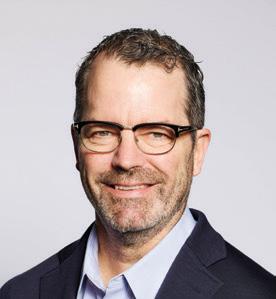
Measuring risk is a core capability, not a product. As cybersecurity maturity grows, the integration of financial metrics with technical security data will become critical. The industry calls this ‘CRQ’ but I call it cybersecurity risk management. You can’t extract quantitative measurement from the broader domain of cybersecurity risk management — they are one and the same. The good news is that the majority of CISOs will have CRQ capabilities in 2025 — in part or wholly integrated into their cybersecurity risk management programmes.
The CISO that focuses on economic and operational efficiency will be fast friends with business-focused
leaders. The modern CISO will see risk management as minimising business impact without breaking the bank. It’s that simple in theory. In practice, the CISO must do this in a structured manner that is explainable to business stakeholders and executable by operators, which goes back to measurement as a career skill and core security capability. Clear, measurable communication will be essential, allowing CISOs to translate complex security strategies into actionable insights for business leaders. In short, our relationship with business folks who are focused on winning will be improved to the extent we adopt the right concepts, objects, and methods of measurement. This approach will foster stronger partnerships with the C-suite, enhancing decision-making and driving business outcomes while managing cyber risk effectively.
STEFAN LEICHENAUER
,
VP
- engineering at SandboxAQ Prediction: Autonomous AI agents and large quantitative models
The future of AI extends beyond traditional language-based models (LLMs) and is now evolving toward autonomous agents capable of decision-making through environmental interactions. This agentic approach represents a new frontier, enabling systems that adapt to dynamic conditions — a significant advantage in sectors where conventional data analysis may fall short.
Large quantitative models (LQMs) are instrumental in this evolution, leveraging extensive quantitative data combined with physics-aware architectures. Unlike language models, which predominantly process text, LQMs are designed to address complex, data-intensive challenges in fields such as drug discovery, materials science, healthcare diagnostics, financial modelling, and industrial optimisation. The precision and data-driven insights provided by LQMs far exceed what typical AI tools
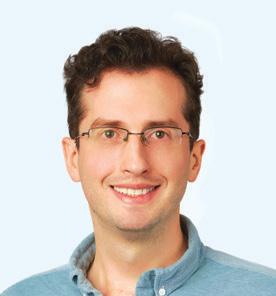
can achieve. For regional companies operating in these sectors, adopting LQMs could facilitate breakthroughs, positioning the region as a leader in next-generation AI applications.
As AI models scale up in size and complexity, dedicated infrastructure becomes crucial. The focus in AI is shifting from algorithmic advancements alone to the physical infrastructure that supports AI applications at scale. Custom-built data centres and high-performance hardware, paired with optimised energy management systems, are necessary to handle the computational demands of massive models.
In response, governments and organisations in the Middle East have begun investing in AI-supportive infrastructure. Initiatives like Dubai’s AI Lab and specialised AI data centres reflect a recognition that AI innovation hinges on a strong physical foundation. For organisations, these infrastructure investments are no longer just an option, but a requirement to sustain growth and drive innovation. Building robust infrastructure will enable Middle Eastern companies to handle the demands of complex AI applications and position the region as a leader in AI capabilities.
SUE AZARI , eCommerce industry lead at AppsFlyer
Prediction: The rise in-app shopping

Social media platforms have become powerful sales channels, and I predict that social commerce will reach new heights in 2025. Apps like Instagram, TikTok, and Pinterest are already evolving to include robust shopping features, enabling consumers to browse and purchase without ever leaving the platform. Brands will invest heavily in shoppable posts, live-stream events, and collaborations with influencers to create a seamless, engaging path to
AS AI MODELS SCALE UP IN SIZE AND COMPLEXITY, DEDICATED INFRASTRUCTURE BECOMES CRUCIAL
purchase. This trend is about more than convenience — it’s about meeting customers where they are and delivering a dynamic, community-driven shopping experience.
Augmented reality (AR) is poised to revolutionise the online shopping experience. By 2025, I expect AR to be integrated into more and more major e-commerce apps, offering virtual try-ons, home simulations, and interactive 3D product views. These immersive features will help customers make better purchasing decisions, drastically reducing return rates — a persistent challenge for online retailers. The ability to “try before you buy” will become a crucial differentiator, merging the best of in-store experiences with the convenience of online shopping.
IRFAN SHAKEEL , VP of training and certification services at OPSWAT
Prediction: Importance of cyber hygiene and organisational accountability
A focus on maintaining cybersecurity fundamentals, combined with advanced threat detection, is crucial.


Businesses must recognise that cyber threats pose significant business risks, requiring a balance between regulatory compliance and proactive security measures. However, even with technical defences, human factors continue to be a critical point of vulnerability. Despite considerable investments in education and awareness, people still frequently fall for phishing schemes, social engineering attacks, and other manipulative tactics, leading to breakdowns in security defences. To counteract this, organisations must go beyond conventional awareness programmes, implementing tailored, continuous training that evolves alongside emerging threats. Regular upskilling and immersive training are essential to instil a proactive mindset, fostering vigilance that aligns with both regulatory compliance and proactive security measures.

GOING BOLD AND BIG
WITH AMBITIOUS PLANS TO DOUBLE LARGE-SCALE EVENTS BY 2033 AND A DHS10BN INVESTMENT IN EXPANDING THE DUBAI EXHIBITION CENTRE, THE DUBAI WORLD TRADE CENTRE IS POISED TO REDEFINE DUBAI’S MICE LANDSCAPE
Dubai’s ambition to become the world’s leading business and events hub takes a significant leap forward with the Dubai World Trade Centre’s (DWTC) $10bn expansion of the Dubai Exhibition Centre (DEC). Set to become the region’s largest indoor events venue, the expansion aligns with Dubai’s Economic Agenda (D33) and 2040 Urban Master Plan, driving economic growth, sustainability, and global connectivity. In a conversation with Mahir Julfar, executive vice president of DWTC, and Amer Alfarsi, acting vice president of Real Estate Development, DWTC, we explore how this monumental project is poised to reshape Dubai’s MICE sector and position the city as a future-focused global leader.
MAHIR JULFAR, EVP, DWTC
The ongoing expansion will see the DEC become the region’s largest indoor events venue. How do you foresee this scale and capacity changing the landscape of Dubai’s MICE (meetings, incentives, conferences, and exhibitions) sector?
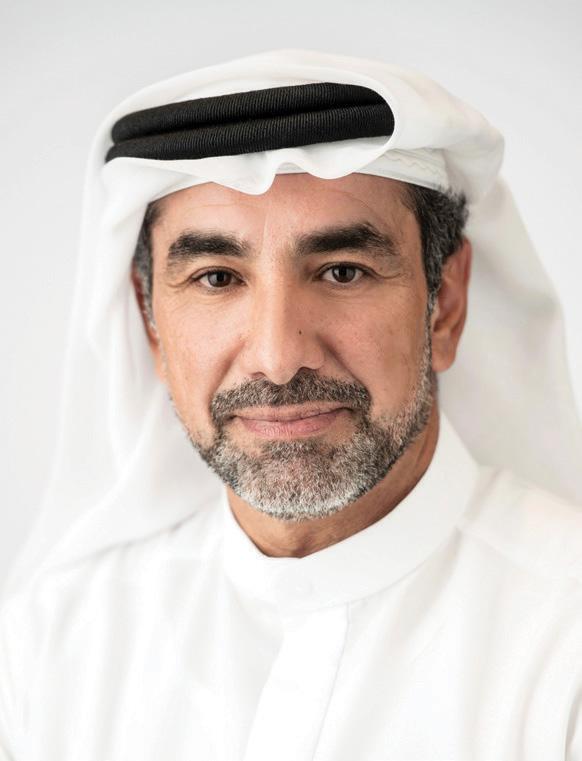
Building on Dubai World Trade Centre’s world-class event hosting infrastructure and over four decades of sustained economic value generation, the expanded DEC will serve as the new home for mega exhibitions. The final phase by 2031 will bring the total amount of indoor exhibition space to 180,000 square metres, featuring 26 halls on a single contiguous level that spans 1.2 kilometres, with the ability to hold one mega event or 20 multiple events simultaneously.
Our approach involves growing existing events and expanding into established and new industry sectors including technology, healthcare, food and beverages, financial services, energy, and real estate, while also introducing platforms to drive stronger global participation in rapidly evolving sectors such as media and entertainment, mobility, education, tourism, and manufacturing, ensuring we attract a broad spectrum of international and regional clients.
With a significant increase in exhibition space, how do you plan to host a growing number of large-scale events while ensuring the quality of each experience for exhibitors and visitors?
With the increase in exhibition space, our plans for DEC ensure a balance between hosting a greater number of large-scale events and maintaining exceptional quality for exhibitors and visitors alike. This is achieved through a targeted approach that leverages the unique strengths of each venue.
The DEC expansion is driven by Dubai’s rising status as a global business hub and the dynamic demands of an evolving international events industry.
The expanded capacity creates a clear differentiation between our venues, with DEC serving as the primary venue for mega exhibitions, global summits, and largescale international events. In contrast, DICEC will remain the hub for conferences, association gatherings, and meetings, leveraging its prime location in the heart of Dubai and seamless connectivity to DXB.
DWTC is uniquely positioned to maximise the potential of both venues by capitalising on Dubai’s strategic location, allowing us to cater to a broad spectrum of
events. This synchronised development creates a unique urban hub that showcases Dubai’s forward-thinking vision while ensuring operational efficiency.
This strategic approach supports our target to increase annual events from 300 to 600 by 2033, while ensuring each venue maintains its specialised focus and delivers exceptional experiences for exhibitors and visitors alike.
Given that Dubai is aiming to double the number of large-scale events by 2033, how do you envision the DEC expansion playing a central role in achieving this goal?
DEC will achieve increased event capacity through a strategic threephase development with Phase 1 completion in 2026 delivering a daily visitor capacity of 50,000 people. Phase 2 in 2028 will enhance the supporting venue infrastructure, road network and dedicated multi-story parking. The final phase by 2031 will bring the total amount of indoor exhibition space to 180,000 square metres, featuring 26 halls on a single contiguous level that can hold one mega event or 20 multiple events simultaneously. Each phase expands our ability to host concurrent events, optimising the venue’s operational capabilities throughout the calendar year.
To support this ambitious growth, DEC will integrate smart traffic systems and immersive digital experiences specifically designed for simultaneous event management. The venue’s advanced security protocols and stateof-the-art surveillance systems are scaled to handle increased visitor numbers, ensuring efficient processing of larger crowds while maintaining a secure environment.
THE DEC EXPANSION IS DRIVEN BY DUBAI’S RISING STATUS AS A GLOBAL BUSINESS HUB AND THE DYNAMIC DEMANDS OF AN EVOLVING INTERNATIONAL EVENTS INDUSTRY.”
Supplied
AMER ALFARSI, ACTING VP - REAL ESTATE DEVELOPMENT, DWTC
The DEC expansion is a monumental project with a Dhs10bn investment. Can you walk us through the key milestones achieved so far in Phase 1?

The DEC expansion is a landmark investment of Dhs10bn, representing a strategic investment that will drive substantial returns for Dubai while enhancing DWTC’s contribution to the Dubai Economic Agenda (D33). Phase 1 of the DEC expansion showcases unprecedented engineering and construction scale, with enabling and piling work contracts finalised, main contractor and primary subcontractors appointed, and works currently advancing towards erecting the first steel columns in the structures that make up phase one of the expansion.
Phase 1 of the construction project is underway with foundation work involving 515 piles to support the structure, 14,000 tonnes of structural steel — equivalent to the weight of two Eiffel Towers and 48,000 cubic metres of reinforced concrete. The expanded exhibition centre will be covered with 78,000 square metres of roof sheeting, an area comparable to 62 Olympic-size swimming pools. Supporting infrastructure includes multi-storey car park buildings and expanded marshalling yards to optimise event turnaround times. The development’s LEED certification from the US Green Building Council will also ensure operational efficiency while minimising environmental impact through sustainable design elements.
Scheduled for completion in 2026, Phase 1 of DEC expansion, will add 64,000 square metres of permanent exhibition space, plus approximately 30,000 sqm of temporary exhibition space, bringing the total exhibition space to 140,000 square metres with a daily visitor capacity of 50,000 people.
How does DWTC plan to integrate sustainability into the construction and operation of the expanded facility?
Sustainability is at the heart of DEC’s expansion, aligning with Dubai’s broader sustainability goals. The venue is already LEED certified and incorporates environmentally conscious design elements to optimise operational efficiency while minimising environmental impact. We have implemented green building practices, energyefficient systems, eco-friendly materials, and renewable energy integration to achieve significant milestones: a 22 per cent reduction in energy consumption, a 40 per cent decrease in indoor water use, and a 50 per cent reduction in outdoor water usage.
Tell us how the expansion of the DEC aligns with the broader vision of Expo City Dubai and Dubai’s 2040 Urban Master Plan.
The DEC expansion has been strategically planned to align with the visionary goals of the Dubai 2040 Urban Master Plan complemented by Expo City Dubai masterplan and the recently announced expansion of Al Maktoum International Airport. This synchronised development approach creates a unique urban hub that showcases Dubai’s forwardthinking vision for establishing a future city. When Phase 1 of expansion is completed in 2026, DEC will benefit from enhanced connectivity and infrastructure, creating seamless accessibility for business visitors and event attendees.
Expo City Dubai, designed as the city’s next urban epicentre and the UAE’s first 15-minute city, where residents and visitors can access everything they need within a short walk or bike ride, offers seamless access to business, residential, and leisure facilities, making it a prime destination for both residents and visitors. The DEC expansion will not only serve as an anchor for the future city, the wider Dubai South community, and DWC but also act as a magnet for high-profile business events, driving new investments, attracting international visitors, and significantly boosting business tourism, contributing to increased footfall in the district.
DEC’s robust infrastructure plans offer easy access to Sheikh Mohammed bin Zayed Road and direct connectivity to the Expo 2020 Metro Station. It also connects to popular districts and destinations via the metro’s red line, including Ibn Battuta Mall, Festival Plaza Jebel Ali, Dubai Investment Park, and DMCC. Building on this foundation, DEC, a venue for the future, in a city for the future, will play a pivotal role in tripling DWTC’s contribution the Dubai Economic Agenda (D33), and to position Dubai among the top three global cities for business, tourism, and trade. L
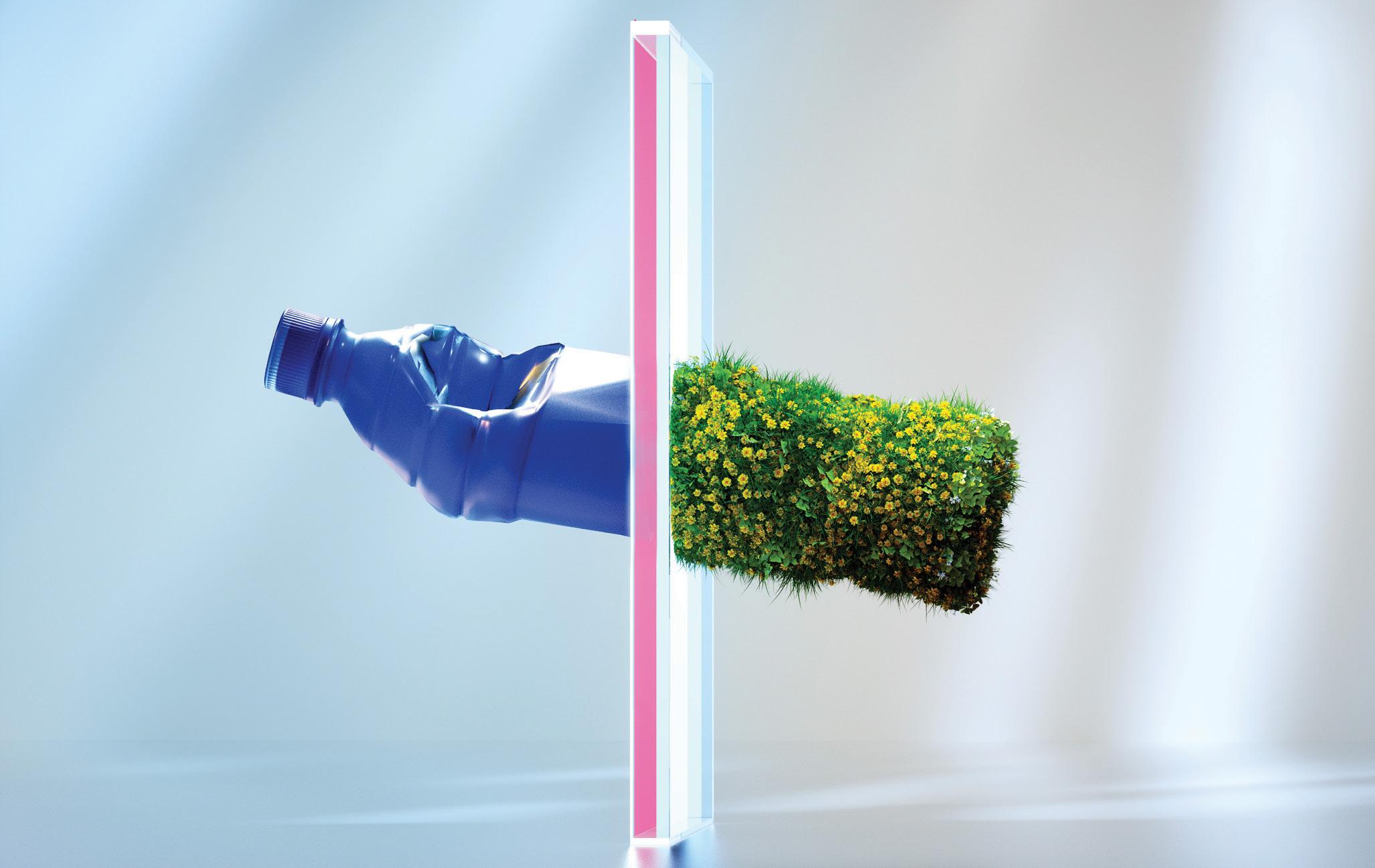
HOW TADWEER IS DRIVING SUSTAINABILITY IN THE UAE FROM WASTE TO VALUE
ALI AL DHAHERI, THE GROUP’S MD AND CEO OF TADWEER GROUP, DELVES DEEPER INTO THE GROUP’S AMBITIOUS PLANS TO REVOLUTIONISE WASTE MANAGEMENT AND SUPPORT THE NATION’S SUSTAINABILITY GOALS
Tadweer Group, the driving force behind waste management innovation in Abu Dhabi, is leading the charge towards a sustainable and circular economy. With ambitious goals to divert 80 per cent of waste from landfills by 2030, the group is committed to transforming waste into valuable resources through cutting-edge technologies and strategic partnerships.
Under the leadership of Ali Al Dhaheri, Tadweer Group has already launched several high-impact projects, from the region’s first greenfield material recovery facility (MRF) to collaborations on waste-to-energy (WtE) technologies and sustainable aviation fuel. As the UAE continues its journey towards Net Zero 2050, Tadweer’s initiatives are paving the way for an environmentally and economically sustainable future. In this interview, the MD and CEO of the group talks about

Ali Al Dhaheri
Tadweer’s key projects and initiatives in support of Abu Dhabi’s ambitious environmental targets, such as diverting 80 per cent of waste from landfills by 2030, and the role that technology plays in making this a reality.
WHAT STEPS IS TADWEER GROUP TAKING TO ACHIEVE ITS AMBITIOUS GOAL OF DIVERTING 80 PER CENT OF WASTE FROM ABU DHABI’S LANDFILLS BY 2030?
Tadweer Group is at the forefront of revolutionising waste management in Abu Dhabi, aiming to divert 80 per cent of waste from landfills by 2030. We are taking a multi-faceted approach, with a strong focus on leveraging advanced technologies, building strategic partnerships, and engaging the community in recycling efforts. One of the cornerstones of this initiative is the development of Abu Dhabi’s first greenfield material recovery facility (MRF), which will be capable of processing 1.3 million metric tonnes of waste per year. Located in Al Mafraq Industrial area, the MRF will be one of the largest in the region, covering an area of over 90,000 square metres. Additionally, we have rolled out 25 Tadweer reverse vending machines (RVMs) across high-traffic areas in Abu Dhabi, including key locations like the Ministry of Finance and Rabdan Park. These machines, coupled with our Tadweer Rewards app, incentivise the public to recycle plastic bottles and aluminium cans, creating a more engaged and responsible community.
Our collaboration with the Emirates Water and Electricity Company (EWEC) on the development of a waste-to-energy (WtE) plant near the Al Dhafra landfill is another pivotal step. This plant will process 900,000 tonnes of waste annually, generating enough electricity to power 52,500 homes in the UAE. Technology is
central to this transformation, and we believe that the adoption of these innovative technologies, from advanced waste sorting to energy conversion, will drive us closer to our target of 80 per cent waste diversion by 2030.
TELL US ABOUT TADWEER’S APPROACH TO THE CIRCULAR ECONOMY AND HOW YOUR PARTNERSHIPS COMPLEMENT THIS STRATEGY.
Tadweer Group’s approach to the circular economy revolves around maximising the value of waste, transforming it into valuable resources that can benefit both the environment and the economy. We aim to shift public perception of waste, viewing it not as something to be discarded, but as a resource that can be harnessed for positive environmental and economic outcomes.
Our global partnerships are key to this mission. For instance, the Waste to Zero initiative, which we launched at COP28, has gained international traction. This initiative aims to decarbonise the waste sector and has already been endorsed by over 50 global institutions. Our collaboration with the Japanese consortium to develop a waste-to-energy plant in
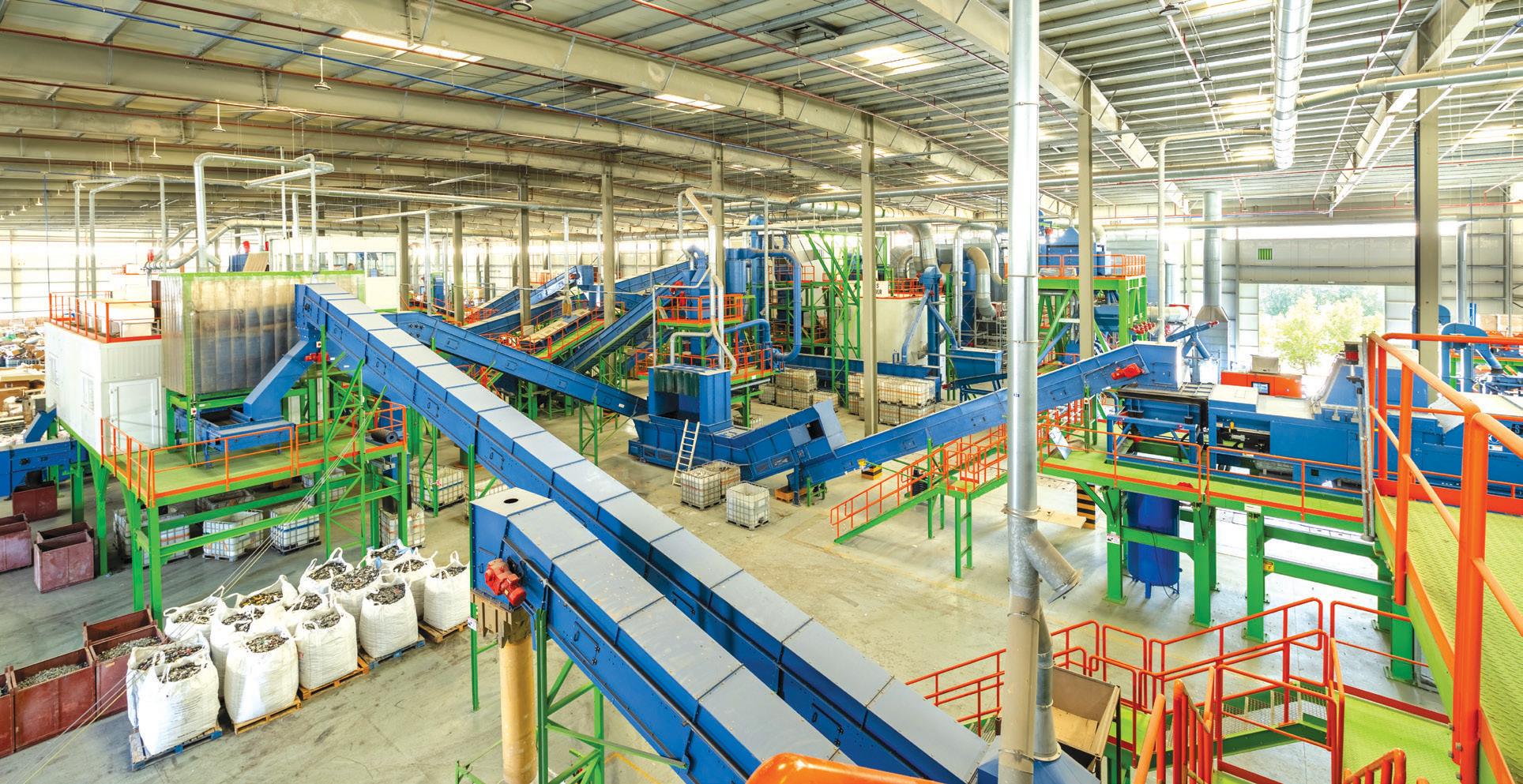
A KEY HIGHLIGHT WILL BE OUR FOCUS ON ‘WASTE-TO-PLUS’ INDUSTRIES, WHERE WE EXPLORE THE ADDED VALUE THAT CAN BE DERIVED FROM WASTE, SUCH AS THE CONVERSION OF WASTE INTO HYDROGEN OR SUSTAINABLE AVIATION FUEL.”
continually derive value from them. Tadweer Group is committed to this vision and to supporting the UAE’s broader sustainability goals by turning waste from an environmental challenge into an economic opportunity.
ARE THERE ANY NEW PROJECTS TADWEER
WILL
ANNOUNCE AT THE UPCOMING ECOWASTE EVENT,
AND
WHAT IMPACT DO YOU ANTICIPATE THESE WILL HAVE ON YOUR OVERALL MISSION?
Al Dhafra and our joint development agreement with Uzbekistan to build a similar facility in the Navoi and Bukhara regions are just some examples of how we are exporting our expertise and learning from global best practices. Additionally, our partnership with UK-based Levidian, to bring their LOOP technology to Abu Dhabi, is helping us to turn waste methane into hydrogen and carbon-negative graphene, providing a new, sustainable way to utilise waste materials. By exploring such innovative technologies and building international partnerships, we are enhancing our ability to contribute to the global circular economy, reducing emissions, and generating new economic opportunities.
HOW DOES THE GROUP’S WORK ALIGN WITH ABU DHABI’S BROADER ENVIRONMENTAL AND ECONOMIC OBJECTIVES, AND WHAT ROLE DO YOU SEE FOR WASTE MANAGEMENT IN THE UAE’S SUSTAINABILITY VISION?
Tadweer’s initiatives are directly aligned with both Abu Dhabi’s environmental and economic objectives. Our efforts to divert waste from landfills and reduce emissions through advanced waste-to-energy technologies are crucial in helping the UAE achieve its Net Zero 2050 goals. The development of large-scale waste-to-resource plants, such as the greenfield MRF and WtE plants, is contributing to the country’s push for renewable energy alternatives and resource efficiency.
From an economic standpoint, Tadweer Group is helping to build a green economy by creating new job opportunities in the waste management and recycling sectors. Our initiatives are fostering a new ecosystem for sustainable practices that will benefit local industries and drive innovation, which in turn promotes new business models, creates employment opportunities, and boosts investment in the sustainability sector. The circular economy is not just about recycling; it’s about rethinking how we use resources and how we can
THIS INITIATIVE AIMS TO DECARBONISE THE WASTE SECTOR AND HAS ALREADY BEEN ENDORSED BY OVER 50 GLOBAL INSTITUTIONS
At the upcoming EcoWASTE exhibition, Tadweer will highlight several new advancements and strategic initiatives aimed at accelerating the UAE’s waste management transformation. We will showcase our cutting-edge waste-to-energy technologies and discuss our collaborative efforts with international partners.
A key highlight will be our focus on ‘waste-to-plus’ industries, where we explore the added value that can be derived from waste, such as the conversion of waste into hydrogen or sustainable aviation fuel.
Tadweer will also present new business opportunities in the circular economy and promote best practices for sustainable waste management. We plan to make important announcements during the event, which will further solidify our role as a leader in waste management and circular economy solutions in the region.
Moreover, the group will continue to host its Sustainable Stand Awards, encouraging exhibitors to build their stands from sustainable materials, and facilitate networking opportunities at our EcoMajlis Lounge. We look forward to inspiring more businesses and individuals to join us in driving forward a sustainable future, where waste is not just discarded but is given a new life as a valuable resource.
Through these initiatives and partnerships, the group is not just contributing to the UAE’s sustainability vision but is helping to set new benchmarks for waste management and circular economy practices on the global stage. L

A BILLION-DOLLAR BET ON THE FUTURE
RENUKA JAGTIANI, CHAIRWOMAN OF LANDMARK, SAYS THE RETAIL CONGLOMERATE PLANS TO REFRESH ITS EXISTING STORES AND ENHANCE ITS ONLINE PRESENCE AND OPERATIONS TO PROVIDE GREATER VALUE AND CONVENIENCE TO ITS CUSTOMERS
ubai-based retail giant Landmark Group plans to invest $1bn (Dhs3.67bn) in the UAE, GCC, India and Southeast Asia to open 400 new stores over the next three years.
The group, which employs 53,000 people, revealed that the new 400 outlets will create 15 to 20 per cent additional employment opportunities, amounting to 7,950 to 10,600 new jobs in the well-diversified group’s different units. Here, Renuka Jagtiani, chairwoman of Landmark, discusses the retail conglomerate’s growth, expansion plans, e-commerce investments, and sustainability initiatives.
LANDMARK GROUP HAS GROWN EXPONENTIALLY OVER THE PAST FIVE DECADES. WHAT KEY MILESTONES AND TURNING POINTS IN THE GROUP’S JOURNEY HAVE CONTRIBUTED TO ITS SUCCESS? Over the past five decades, many factors have contributed to our
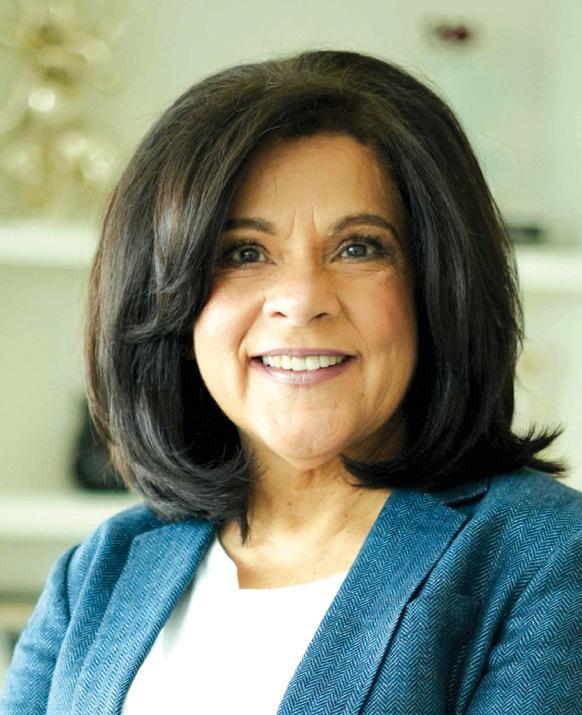
success, including our entrepreneurial spirit, our commitment to empowering people and listening to our customers, and, lastly, our ability to stay relevant by adapting to evolving market conditions, changing consumer habits, and macroeconomic conditions.
As the home of owned brands, we have experienced some key turning points that have allowed us to stay relevant and serve generations of families who have grown up with our brands. Introducing new brands across categories, expanding our retail footprint, and pioneering e-commerce are some of the key highlights of our journey.
Our journey began in 1990 when we launched our footwear business with Shoemart in the UAE after we relocated from Bahrain. We expanded our footprint to Saudi Arabia in 1994 and India in 2001. Over the years, we’ve cultivated a diverse portfolio of brands, including Splash, Home Centre, Lifestyle, Max Fashion, Centrepoint, Home Box and VIVA.
A pioneer in regional e-commerce, we launched our omnichannel venture in 2012. Our online business has consistently grown by over 20 per cent annually in the GCC. As of 2024, we operated 12 independent e-commerce stores, contributing up to 20 per cent of total sales. We’ve also established a strong marketplace presence in the GCC and India, offering both our own and third-party products.
Landmark initiated its sustainability journey in 2014 with Splash,
Renuka Jagtiani
focusing on responsible product development. We’re committed to becoming a circular and climate-positive organisation that encompasses sustainable products, operations, and customer experiences. This includes innovations in product design, packaging, transportation, energy usage, and recycling.
TELL US MORE ABOUT THE GROUP’S GROWTH STRATEGY AND THE OPPORTUNITIES YOU FORESEE IN THE MARKETS WHERE YOU CURRENTLY OPERATE.
We are investing $1bn over the next three years to expand our retail footprint across the GCC, India, and Southeast Asia. Landmark also plans to refresh its existing stores and further strengthen its online presence and operations to bring value and convenience to its customers.
To better serve our customers, Landmark will expand its presence in key markets. VIVA will launch in Saudi Arabia in 2025, while the UAE and Oman will see significant store growth, with nearly 100 stores in the UAE and plans for 50 new stores in Oman by 2028.
Finally, we are committed to growth in India. With 25 years of experience in the market and nearly 1,000 outlets across 265+ cities, the group plans to add 250 more stores in the next three years, including eight new Babyshop stores in key cities within six months.
HOW HAS THE GROUP EMBRACED E-COMMERCE AND SUSTAINABILITY TO STAY COMPETITIVE IN THE EVOLVING RETAIL LANDSCAPE?
Since pioneering e-commerce in the GCC region in 2012, Landmark has steadily expanded its omnichannel presence. Our online business has experienced robust growth, exceeding 20 per cent annually in the Gulf region. Today, our 12 independent e-commerce stores account for a significant portion of our total sales, reaching up to 20 per cent.
Similarly, we have a robust marketplace presence in the GCC and India, offering both our own and thirdparty products on our websites. To further enhance our omnichannel strategy and seamlessly reach customers, we’ve digitised our stores and supply chain. This includes features such as “Click n Collect” and smart self-checkouts.
We’ve been at the forefront of technological advancement, as evidenced by the launch of the Mega Distribution Centre in JAFZA in 2019. The state-of-theart distribution centre is a testament to our commitment to operational excellence.
Our ongoing investments in AI-driven supply chain optimisation, cutting-edge e-commerce platforms, and advanced point-of-sale systems ensure we remain ahead of the curve and deliver exceptional customer experiences.
TO FURTHER ENHANCE OUR OMNICHANNEL STRATEGY AND SEAMLESSLY REACH CUSTOMERS, WE’VE DIGITISED OUR STORES AND SUPPLY CHAIN. THIS INCLUDES FEATURES SUCH AS “CLICK N COLLECT” AND SMART SELF-CHECKOUTS.”
Since 2014, we’ve been on a mission to make a positive impact through sustainable practices, starting with Splash. Our ambitious goal is to achieve a circular and climate-positive future by 2050 across our entire value chain. This involves sustainable product design, eco-friendly packaging, efficient transportation, reduced energy consumption, and effective recycling programmes.
Sustainable products : We are a pioneer in sustainable sourcing and were the first and largest buyers of ‘Better Cotton’ in our markets. We’re committed to responsibly sourced materials and finished products.
Sustainable operations : We’ve made significant strides in energy efficiency. Solar power now powers 14 per cent of our UAE energy needs, and we’re continuously optimising energy management across our facilities.
Sustainable customer journeys: We’re enabling circular customer journeys through reusable and paper bags, e-receipts, and a take-back programme for used clothes in the UAE.
Landmark has made significant strides in green finance and treasury, partnering with leading banks to convert our products to sustainable options. We pioneered the region’s first bilateral sustainability-linked loan with Standard Chartered Bank in 2022, followed by similar agreements with Saudi and Qatari banks. L
LEADING WITH EXCELLENCE
MEET THE 2024 L’ORÉAL-UNESCO FOR WOMEN IN SCIENCE WINNERS WHOSE WORK IS RESHAPING THE FUTURE OF SCIENCE
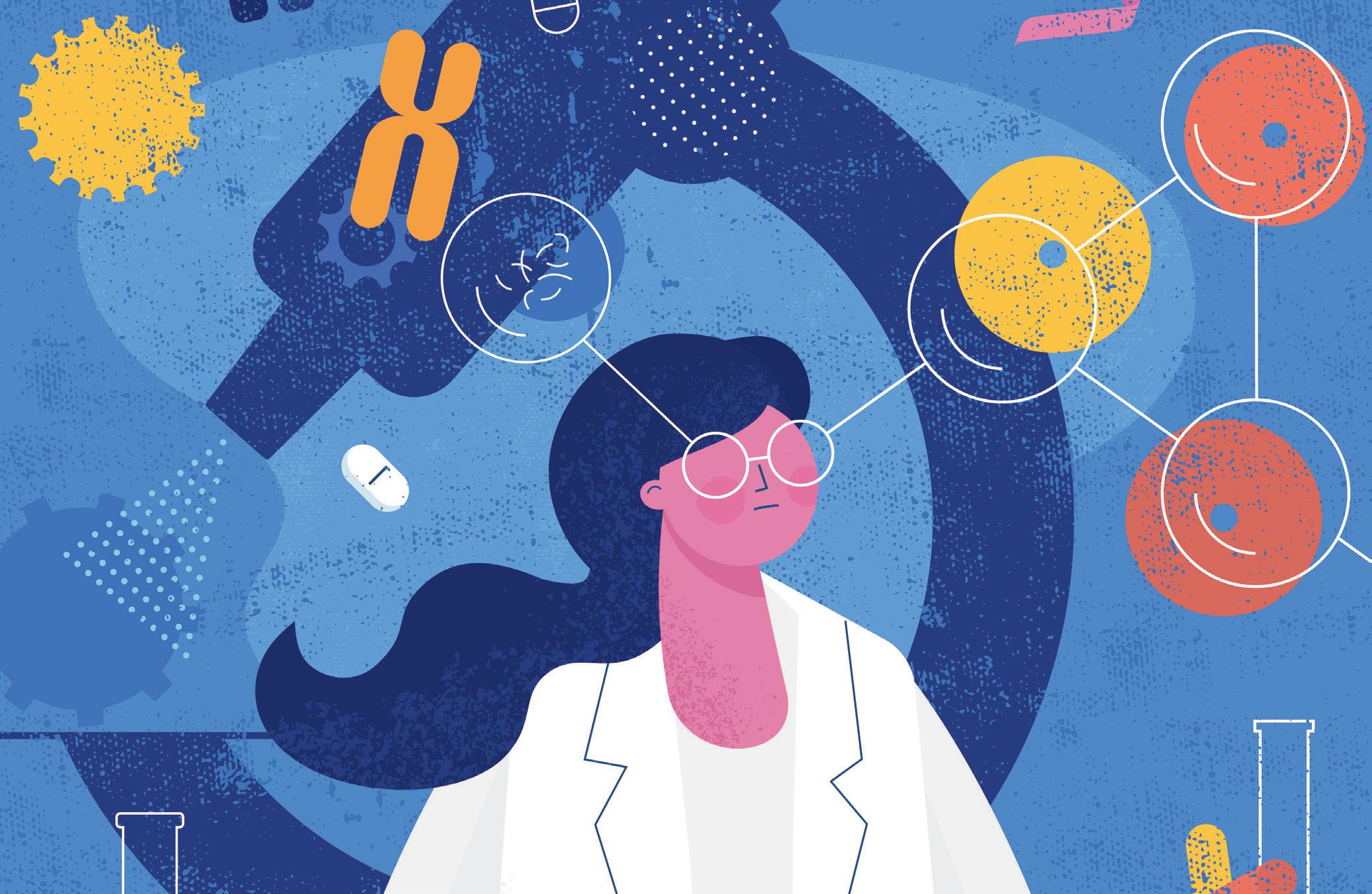
The L’Oréal-UNESCO For Women in Science programme has supported and recognised exceptional female scientists around the globe. Now in its 11th edition in the Arab region, the programme continues to shine a light on the transformative research led by women at the forefront of scientific innovation. Last year, six outstanding researchers have been awarded for their groundbreaking work across a range of disciplines, from forensic chemistry to marine science. In this special feature, we interview the winners of the L’Oréal-UNESCO For Women in Science Awards 2024, exploring their inspiring journeys, groundbreaking discoveries, and the challenges they’ve faced in their pursuit of scientific excellence.
DR HIAM SOUHEIL CHEMAITELLY
NATIONALITY: QATARI
Role: Assistant professor of research in population health sciences at Weill Cornell Medicine-Qatar
Dr Chemaitelly is making noteworthy strides in the study of infectious diseases, particularly in understanding respiratory infections and the effectiveness of public health interventions.
How has the L’Oréal-UNESCO award funding influenced your research?

The award funding has been instrumental in helping me explore new research avenues, especially in the transmission of respiratory infections and evaluating the effectiveness of various interventions. The award has not only provided crucial financial support but also boosted my visibility within
THE REGION HAS MADE CONSIDERABLE PROGRESS IN SUPPORTING AND ENCOURAGING WOMEN’S PARTICIPATION IN SCIENTIFIC FIELDS. IN MANY INSTITUTIONS, WOMEN NOW REPRESENT THE MAJORITY OF RESEARCHERS. HOWEVER, THERE IS STILL AN UNDERREPRESENTATION OF WOMEN IN LEADERSHIP ROLES.”
decision-making within the region’s public health policies. I aim to contribute to the creation of comprehensive maps that track the spread of infectious diseases, which can serve as a baseline for future research and infrastructure development. I hope my work will help position the region as a leader in scientific discovery, particularly in the field of public health, driving meaningful global change after years of lagging behind other regions. By advancing the science of epidemiology and infectious disease interventions, I aspire to make a lasting impact on both regional and global health.
DR LEENA ALI IBRAHIM
NATIONALITY: PALESTINIAN-BULGARIAN
Role: Assistant professor of bioscience at King Abdullah University of Science and Technology (KAUST)
the scientific community. This recognition has paved the way for new collaborations and opened doors to additional funding opportunities, all of which are essential for advancing impactful research. Most importantly, this honour inspires me to continue pushing the boundaries of scientific discovery while motivating other women to pursue careers in science, technology, engineering and mathematics (STEM).
What are the key areas your research aims to address?
One of the areas my research addresses is understanding the dynamics of infectious diseases, particularly how they spread across different populations and environments. This includes identifying the circulating strains, their seasonal variations, and how vaccines perform over time, particularly in terms of their effectiveness and the waning of immunity. These insights are crucial for anticipating outbreaks and developing optimal vaccination strategies. By answering these questions, my research aims to inform public health policies that can effectively mitigate the spread of infections and improve health outcomes regionally and globally.
Have you noticed positive changes for women in STEM in the region over recent years?
Yes, the region has made considerable progress in supporting and encouraging women’s participation in scientific fields. In many institutions, women now represent the majority of researchers. However, there is still an underrepresentation of women in leadership roles. This is partly because many of the advancements in gender equity within science have only occurred in recent years, and many talented women are still at the early stages of their careers. As these women gain experience, I am confident we will see more rising to leadership positions, impacting the future of science in our region.
What long-term impact do you hope to leave behind on the scientific community?
My ultimate goal is to establish a culture of evidence-based
Dr Ibrahim’s groundbreaking research at KAUST explores the relationship between sensory processing and brain development, with a special focus on autism and other neurodevelopmental disorders. Dr Ibrahim is using her platform to deepen the scientific understanding of autism and inspire the next generation of female neuroscientists.
How has the L’Oréal-UNESCO award funding opened new opportunities?
The award will significantly enhance the visibility of my research, helping to raise awareness about the critical questions my lab is working on. This recognition will also open new opportunities to support emerging scientists and secure additional resources for our ongoing research projects.
I am particularly hopeful that this recognition will inspire young women to pursue careers in neuroscience, an area where there is still much to explore.
What are the most significant challenges your research aims to address?
My research focuses on a unique group of brain cells that play a central role in processing sensory information, such as sights and sounds, and integrating it with our past experiences. In my lab at KAUST, we investigate how these cells contribute to sensory processing, how they behave when learning new information, and the genetic factors that influence their function. The goal is to improve our understanding of conditions like autism and other neurodevelopmental disorders, where sensory processing is often disrupted. Using state-ofthe-art technologies, we aim to unlock new
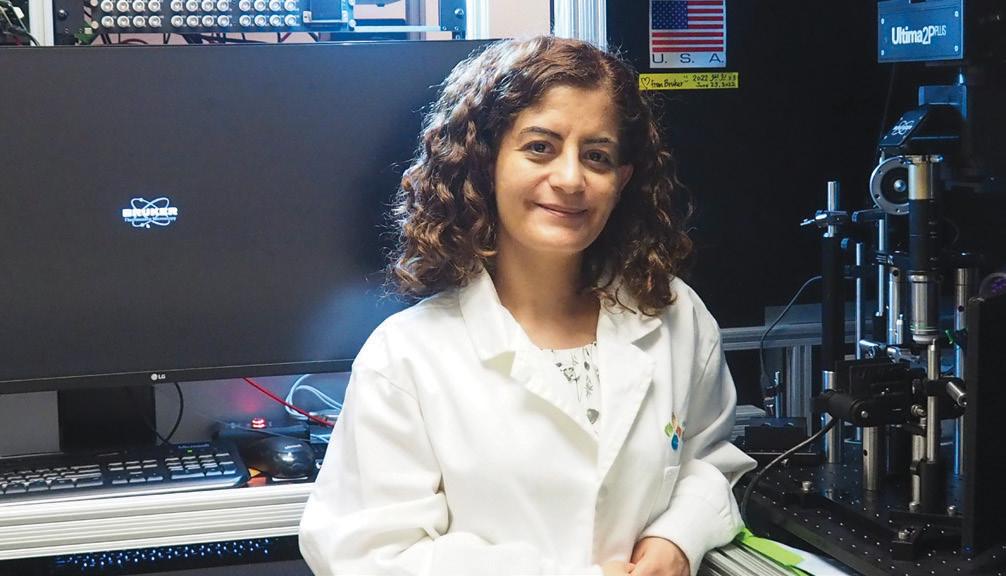
insights into how the brain processes sensory stimuli and how these processes are affected in various disorders.
Have you noticed any shifts or positive changes for women in STEM in the region over recent years?
There has been significant progress in the region, particularly with Arab women pursuing STEM degrees, where their participation now exceeds global averages. However, biases against women still persist and need to be addressed. It is essential to highlight their achievements and ensure that women’s contributions to science are recognized. Initiatives like the L’Oréal-UNESCO For Women in Science Awards are vital in challenging these biases and showcasing the remarkable accomplishments of Arab women in STEM. Despite these advances, more work remains to be done to ensure greater representation of women in leadership roles — a challenge that continues both regionally and globally.
What is the role of scientific research in addressing some of the region’s pressing issues?
Scientific research, particularly basic science, plays a fundamental role in tackling some of the region’s most pressing issues, whether related to health or the environment. While the tangible benefits of basic science may take years, or even decades, to materialise, it provides the foundation for breakthroughs that drive meaningful progress. Without this foundation, applied and translational research would be severely limited. To effectively address the region’s longterm challenges, it is essential to prioritise and support basic science alongside more immediate, application-focused research.
What long-term impact do you hope to have on the scientific community?
My long-term impact as a scientist is focused on advancing our understanding of brain function, particularly how early life experiences shape brain development and influence cognitive outcomes. Beyond the scientific knowledge, I hope my legacy will include mentoring the next generation of scientists, helping them to achieve their full potential, and witnessing their success in advancing the field. Ultimately, I hope to contribute to a greater understanding of the brain, particularly in relation to neurodevelopmental disorders, while inspiring generations of scientists to follow in these footsteps.
DR ENTESSAR AL-HETLANI
NATIONALITY: KUWAITI
Role: Associate professor at Kuwait University
Dr Al-Hetlani, a leading figure in forensic chemistry, is dedicated to developing innovative solutions to improve forensic evidence analysis. Her research aims to streamline the forensic process while addressing critical challenges in the justice system.
How has the L’Oréal-UNESCO award funding opened new opportunities?
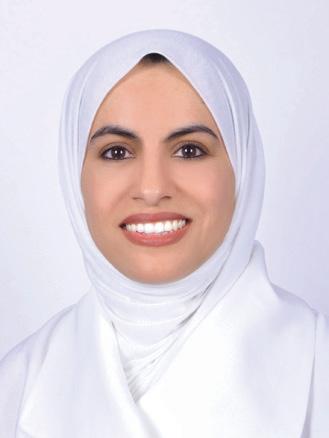
I am incredibly honored to be selected as one of this year’s L’Oréal-UNESCO award winners. This recognition brings me immense joy, and I am truly grateful for this opportunity. The award funding is a significant boost for my research and will help me achieve several key targets. One of the main challenges in conducting research is securing adequate funding and manpower for necessary experiments. This award alleviates that challenge, allowing me to perform important experiments at the University at Albany, NY, US. Specifically, the funding will enable me to explore new methodologies and advance my research on forensic body fluid analysis, which has the potential to lead to groundbreaking findings in the field. Furthermore, receiving this prestigious award elevates my profile in the research community, which could pave the way for additional collaborations and funding opportunities in the future.
Most importantly, it serves as an inspiration for other women in STEM, illustrating the potential for success and impact that can be achieved with support and dedication.
What are the key challenges your research aims to address?
My research focuses on the forensic analysis of various types of trace evidence and drugs, aiming to address significant challenges in the field. One major challenge is the timeconsuming and resource-intensive nature of current forensic evidence analysis methods, which can delay justice and lead to backlogs in forensic labs.
As a scientist, I strive to develop cuttingedge technologies that enhance the efficiency and quality of forensic analysis. By integrating advancements in artificial intelligence and data analysis, my goal is to create solutions that save time and resources while providing definitive answers to forensic questions. Additionally, my
research aims to address critical questions regarding the accuracy and reliability of trace evidence analysis. Looking ahead, I aspire to develop a novel technology for forensic analysis that can be patented and commercialised, thereby improving the field’s ability to analyse trace evidence effectively and expeditiously. Ultimately, I believe that my work can not only drive innovation in forensic labs but also have a profound impact on the justice system by supporting accurate and timely investigations.
In your view, what is the role of scientific research in addressing some of the region’s pressing issues?
In my view, scientific research is instrumental in addressing the multifaceted challenges facing the region, enabling informed decision-making, promoting innovation, and contributing to sustainable development and stability. Research provides evidence-based solutions to major pressing issues, such as public health challenges, where it helps understand health trends, develop effective interventions, and improve healthcare systems. Additionally, scientific research plays a crucial role in addressing the impacts of climate change, including extreme temperatures and changing precipitation patterns. It aids in developing adaptive strategies and risk assessments that are essential for resilience. Moreover, research drives innovation in various sectors, such as renewable energy, technology, and biotechnology, facilitating economic diversification and promoting sustainable development. By investing in research and education, the region can build a skilled workforce equipped to tackle its challenges effectively.
Overall, the impact of scientific research is profound, offering pathways to enhance public health, mitigate climate change effects, and foster economic growth, ultimately leading to a more sustainable and stable region.
What legacy or long-term impact do you hope to leave behind in the scientific community or society at large?
It’s a very important question. I believe it is the dream of every scientist to leave a legacy, no matter how small, for future generations. For me, leaving a meaningful legacy in the scientific community is essential. I aim to contribute significantly to the body of knowledge in forensic chemistry through innovative research that addresses critical challenges.
As a female scientist in the Middle East, my goal is to set my work apart by publishing impactful studies that inspire future generations of scientists and provide valuable insights for ongoing research. Having supervised several post- and undergraduate students, primarily women, I am committed to continuing this mentorship.
By supporting the growth and development of young scientists, especially those from underrepresented groups in STEM, I hope to create a ripple effect that encourages diversity and inclusion within the scientific community. Additionally, I recognize my responsibility to raise awareness and educate the next generation, empowering them to make informed decisions based on scientific evidence. A key part of my legacy would be developing technologies or methodologies that significantly improve practices in the forensic chemistry field, particularly those that enhance the efficiency and reliability of analysed trace evidence.
By making innovative contributions that are widely adopted, I aspire to create lasting effects on society, ultimately advancing
the field and inspiring others to follow in these footsteps.
FATIMA ALSHAMSI NATIONALITY: EMIRATI
Role: PhD candidate at Khalifa University Alshamsi, is working at the forefront of cardiovascular research. Her groundbreaking work on understanding how diabetes contributes to cardiovascular complications aims to open new doors for therapeutic interventions.
How has the L’Oréal-UNESCO award funding influenced your research or opened new opportunities?
The L’Oréal-UNESCO award funding has had a significant impact on my research. It has provided me with the financial support needed to advance some of the more ambitious aspects of my work, such as expanding our use of genomics and transcriptomics to better understand cardiovascular complications in diabetes. This funding has also opened doors for collaborations with researchers and institutions worldwide, allowing me to share insights and gain diverse perspectives. The recognition has amplified the visibility of my research, creating opportunities to engage with a broader scientific community and potentially impact healthcare solutions more effectively.
What are the most significant challenges your research aims to address?
My research addresses the challenge of understanding how diabetes leads to cardiovascular complications, which are a major cause of morbidity and mortality in the UAE and globally.

Specifically, I aim to identify the proteins that cause dysfunction in endothelial cells — the cells that line our blood vessels. By unraveling these mechanisms, my research seeks to pave the way for targeted therapies that can either prevent or treat these complications. Ultimately, the goal is to improve patient outcomes and reduce the healthcare burden associated with diabetes-related vascular diseases.
Have you noticed any positive changes for women in STEM in the region over recent years?
Yes, I’ve observed several positive changes. The UAE, in particular, has made tremendous progress in promoting gender equality in science and technology. Initiatives to support women scientists, from scholarships to mentorship programmes, have increased over the past years. Universities like Khalifa University are creating inclusive environments, investing heavily in mentorship, and ensuring that women have the resources and opportunities to thrive. While there is still work to be done, the growing number of women excelling in STEM fields is a testament to these efforts and an encouraging sign for the future.
What long-term impact do you hope to have on society and the scientific community?
I aspire to leave a legacy marked by significant advancements in healthcare, particularly in improving the quality of life for individuals affected by chronic diseases like diabetes. My ultimate goal is for my research to lead to the development of therapies that reduce the burden of health complications and empower patients to live healthier, more fulfilling lives. Beyond scientific contributions, I am passionate about inspiring and uplifting the next generation of scientists, especially young women in the UAE and beyond. By mentoring and advocating for others, I hope to cultivate a supportive and thriving scientific community that continues to drive impactful research and transform lives.
ISRAA AL HUSSAIN AL HASSAN OTHMAN
NATIONALITY: EMIRATI

Role: PhD candidate at Khalifa University
Othman’s work is focused on improving CO₂ reduction processes. Her research covers nanomaterials and photocatalysis, including the development of quantum dots and their nanocomposites for photocatalytic applications.
How has the L’Oréal-UNESCO award funding opened new opportunities for you?
Winning the award has been an incredible honour, and I believe it will have a profound impact on both my professional and personal growth. Professionally, it increases the visibility of my work, opening doors to collaborations, funding opportunities, and access to advanced resources. Personally, it strengthens my confidence and reinforces my commitment to inspiring other women in STEM. This recognition motivates me to push the boundaries of my
research while serving as a role model for the next generation of women scientists.
What are the most significant challenges or questions your research aims to address?
My research aims to tackle critical challenges in sustainable CO₂ reduction, focusing on enhancing the efficiency and selectivity of quantum dots in light-driven processes. One of the key questions is how to optimise quantum dots’ surface and electronic properties to improve their catalytic performance. This involves addressing issues like charge recombination, stability under reaction conditions, and maximising light absorption to make CO₂ conversion processes more efficient and practical for real-world applications.
Have you noticed any shifts or positive changes for women in STEM in the region over recent years?
Yes, there’s been a noticeable increase in initiatives and policies aimed at supporting women’s participation in STEM fields. Programs, scholarships, and mentorship opportunities specifically for women have become more accessible, and universities and organizations are actively promoting female representation in STEM disciplines. It’s becoming increasingly common to see women in leadership positions, such as heads of departments or directors of research centers. These positive changes are helping to create a more inclusive environment, opening doors for women and empowering them to contribute significantly to scientific advancements.
How is scientific research in addressing the region’s pressing issues?
Scientific research is essential for tackling the region’s pressing issues, such as water scarcity, energy sustainability, environmental conservation, and public health. It provides a structured approach to understanding root causes and assessing viable solutions. Through rigorous study and application of the scientific method, we can develop innovative, sustainable, and efficient solutions that are tailored to the region’s specific needs. This process ensures that solutions are not only effective but also mindful of potential unintended consequences, establishing a strong foundation for long-term progress and resilience.
How do you want to impact the scientific community and society at large?
I hope to leave a legacy of meaningful
contributions to sustainable technology and inspire others, especially women, to pursue impactful careers in science. My goal is for my work in renewable energy and CO₂ reduction to advance environmental solutions that benefit society and future generations. Beyond scientific achievements, I aspire to be a role model who demonstrates resilience and passion, showing that anyone, regardless of background, can make a difference in the world through science.
TAIBA ALAMOUDI
NATIONALITY: SAUDI ARABIAN
Role: PhD candidate at KAUST
Alamoudi is making strides in marine science by exploring the effects of climate change on marine ecosystems.
How has the L’Oréal-UNESCO award funding influenced your research or opened new opportunities?
The award has helped bring much-needed visibility to marine ecology in the region, a field that remains relatively unknown and under-addressed. In many universities here, this major is even tailored primarily to male students. Through this recognition, I hope to change that perception and show that women are equally capable and essential in advancing marine science. This award is an opportunity to challenge outdated norms, highlight the importance of marine conservation, and inspire more women to pursue this vital field. With the support of this award, I am also able to make my research accessible through open-access publications, allowing broader access to these findings. This has created a platform to reach local and global communities and foster new partnerships that can help shape the future of marine ecology.
What are the challenges your research aims to address?
My research focuses on understanding how algae respond to deoxygenation, a significant effect of climate change on marine ecosystems. As ocean oxygen levels drop due to rising temperatures, certain algae species can adapt and even thrive, while others struggle or decline. This shift disrupts the balance in coral reefs and seagrass meadows, where algae play crucial roles in providing oxygen, food, and habitat for other marine organisms. By studying how algae species respond under deoxygenated conditions, I aim to understand the competition dynamics that emerge as some species outcompete others, potentially overwhelming coral populations and altering the ecosystem. This research seeks to identify ways to restore ecosystem balance and also explores sustainable uses for algae that thrive under these conditions. If we can harness the resilience of certain algae species, they could serve as valuable resources for bioproducts, food, and pharmaceuticals.
Have you noticed any shifts for women in STEM in the region over recent years?
In recent years, the MENA region has made significant progress in promoting women’s participation in STEM, with women now over 55 per cent of STEM graduates in the region, surpassing the global average of 35 per cent. This shift reflects increased gender inclusivity in STEM education across many countries in the region. However, challenges remain, as many women still face societal stereotypes and cultural barriers that hinder their full participation in STEM careers. Additionally, there is a gap between the high number of female

STEM graduates and their representation in the workforce, indicating a need for further efforts to ensure that educational achievements translate into professional opportunities.
How is scientific research addressing the region’s key issues?
Scientific research plays a vital role in addressing the region’s pressing issues by providing evidence-based solutions to environmental challenges like desertification and marine ecosystem degradation. Through research, we gain insights into sustainable land management practices to combat desertification and explore ways to conserve critical ecosystems like coral reefs, which support biodiversity and local fisheries. Studies on algae as a resource for food and bioproducts open pathways to sustainable alternatives that could support environmental and economic resilience.
What long-term impact do you want to have on the scientific community?
My ultimate goal is to empower future generations, especially young women, to pursue careers of their choice. I want to be remembered as someone who challenged stereotypes about women in science. I aim to create a more inclusive and diverse scientific community, where everyone has equal opportunities to contribute their unique perspectives. I hope that I can serve as a testament to the power of education, perseverance, and passion. Ultimately, I aspire to leave a legacy of a more sustainable and equitable future, where scientific research is valued and utilised for the benefit of all humanity and the planet we share. L
BOOKS AND BEYOND
HERE ARE FIVE LIFE-CHANGING BOOKS TO HELP YOU START AFRESH AND FIND YOUR PURPOSE
Starting anew or finding your true purpose can feel like a daunting journey, but the right guidance can make all the difference. Whether you’re navigating a career change, personal transformation, or simply seeking a fresh perspective on life, these inspiring books offer invaluable insights and practical strategies to help you break free from limitations, cultivate your passions, and create a life that aligns with your deepest values.

THE UNTETHERED SOUL
BY MICHAEL A. SINGER
Break Free from Limiting Beliefs and Emotional Baggage
In The Untethered Soul, Michael A. Singer explores the idea that we are often weighed down by our thoughts, emotions, and past experiences, which create mental and emotional burdens that hold us back from realising our true potential. Singer’s approach invites readers to step outside their mental chatter and detach from the constant flow of thoughts and emotions that define us. By doing so, he encourages the practice of mindfulness and meditation to observe the mind without becoming attached to it. The ultimate goal is to tap into a state of inner peace and clarity, where you can experience life as it unfolds, without being caught in the constraints of old beliefs or past wounds.
The book guides readers toward selfrealisation and spiritual freedom, teaching how to live with more presence and awareness. It emphasizes that you are not your thoughts or emotions — these are temporary states that do not define your essence. This empoweringperspective allows you to begin anew, unburdened by old stories or limiting perceptions.
Whether you are seeking emotional healing, personal growth, or simply a fresh perspective on life, The Untethered Soul offers timeless wisdom for achieving inner freedom and peace. Its simplicity and depth make it a classic in the self-help genre, ideal for anyone ready to leave the past behind and embark on a journey of self-discovery.
BIG MAGIC
BY ELIZABETH GILBERT
Unleash Your Creativity and Overcome Fear
In Big Magic, Elizabeth Gilbert invites readers to embrace creativity in all its forms and make it a central part of their lives. She emphasises that creativity is not just for artists but for anyone who has a desire to create, whether
through writing, business, art, or personal projects. Gilbert dispels the myth that creativity requires perfectionism or flawless execution. Instead, she encourages readers to approach creativity with a sense of joy, curiosity, and fearlessness.
Through a mix of personal stories, humour, and practical advice, Big Magic empowers you to take risks, make mistakes, and learn to enjoy the process rather than focusing solely on the outcome. Gilbert also addresses the common fears and self-doubt that prevent people from pursuing their passions, offering strategies to overcome these emotional blocks. The book highlights that creativity is a natural, accessible part of being human and invites you to invite it into your daily life, whether or not you consider yourself a “creative type”. If you’re feeling stuck or uncertain about taking the next step in your creative journey, Big Magic offers a liberating perspective: that creativity is a practice, not a gift. By embracing curiosity over

fear and action over perfectionism, this book is a must-read for anyone seeking to rekindle their passions, start fresh, or embark on a new project.
YOU ARE A BADASS
BY JEN SINCERO
Tap into Your Inner Power and Create the Life You Want
Jen Sincero’s book is an energising, straight-talking guide to overcoming self-doubt and stepping into your personal power. Sincero blends humour with practical advice, using her own experiences to show readers how to shift their mindset and take bold action. She emphasises the importance of selflove, self-belief, and having the courage to pursue your goals, regardless of any perceived limitations.
Throughout the book, Sincero challenges you to examine your current thought patterns and encourages you to confront the fears that hold you back. She provides a series of exercises and affirmations to help you rewrite your inner dialogue, replacing negative selftalk with empowering beliefs. The key takeaway from this book is that you have the ability to create the life you desire — but it requires taking responsibility for your choices, committing to personal growth, and aligning your actions with your true desires. This book is for anyone who feels stuck, lacks confidence, or wants to create a

major change in their life. With its mix of motivational anecdotes and actionable advice, the book serves as the ultimate pep talk to help you shed self-doubt, embrace your uniqueness, and start living the life you deserve.
THE MAGIC OF THINKING BIG
BY DAVID J SCHWARTZ
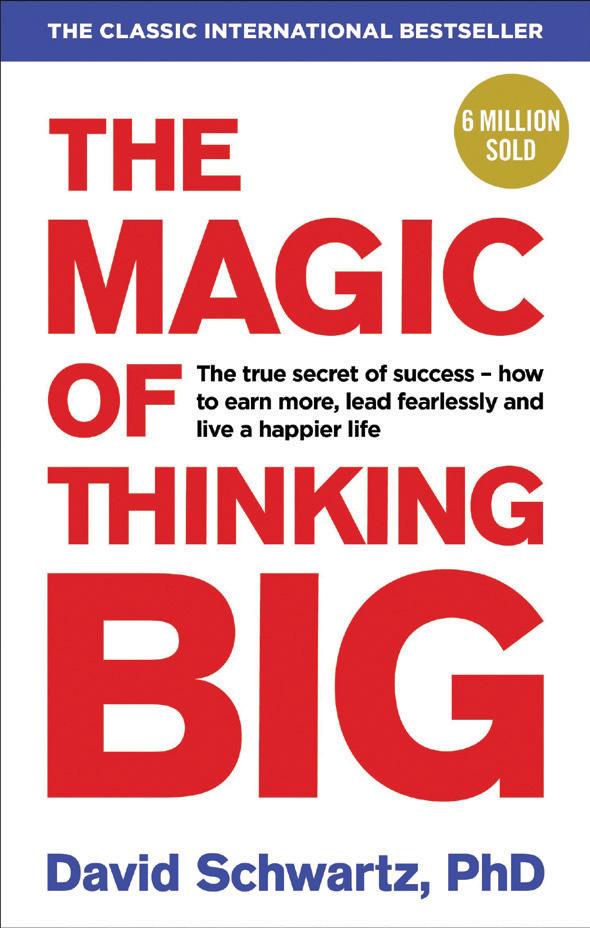
Dream Big, Think Bigger, and Achieve More
David J Schwartz’s The Magic of Thinking Big is a timeless classic that inspires readers to aim higher and think beyond their current limitations. Schwartz argues that the secret to success lies not in innate intelligence or special talent but in thinking and acting with confidence and ambition. The book emphasises that the most successful people are those who set big, audacious goals and believe in their ability to achieve them.
Schwartz provides a comprehensive framework to help you transform your thinking and develop a mindset that supports your success. He offers practical strategies to overcome fear, procrastination, and self-doubt, while also teaching how to develop the confidence to pursue your biggest
dreams. The book outlines how thinking positively can have a profound impact on both personal and professional growth, and how to cultivate this mindset to achieve long-term success.
ATOMIC HABITS
BY JAMES CLEAR
Small Changes, Big Results: Build Better Habits for a Fresh Start
James Clear’s book demonstrates the power of small, consistent changes in creating lasting success. Clear’s central thesis is that it’s not major life overhauls that bring results, but rather the accumulation of tiny habits that, over time, lead to extraordinary outcomes. By focusing on “atomic” (small) habits, Clear shows how to create systems that support your goals and how to break free from bad habits that are holding you back.
Clear’s advice is grounded in four fundamental principles: cue, craving, response, and reward, which together create a cycle that drives behavior. He also outlines practical strategies to design your environment and set up systems that make good habits easier and bad habits harder to maintain. Atomic Habits is for anyone looking to transform their life through small, manageable changes. L

PURSUE YOUR PURPOSE
IN A WORLD WHERE PURPOSE FUELS SUCCESS AND PASSION DRIVE PROGRESS, LEADERS FROM VARIOUS SPHERES — BUSINESS, POLITICS, AND ACTIVISM — OFFER PROFOUND INSIGHTS ON HOW TO NAVIGATE CHALLENGES, SEIZE OPPORTUNITIES, AND INSPIRE POSITIVE CHANGE

WE WILL KEEP MOVING FORWARD, AND WE WILL NOT STOP. THE UAE WILL REMAIN A SYMBOL OF EXCELLENCE, OPTIMISM, AND A MODEL OF POSITIVE CHANGE.”
“TO BE A CEO IS A CALLING. YOU SHOULD NOT DO IT BECAUSE IT IS A JOB. IT IS A CALLING, AND YOU HAVE GOT TO BE INVOLVED IN IT WITH YOUR HEAD, HEART AND HANDS.”
“Business opportunities are like buses, there’s always another one coming.”
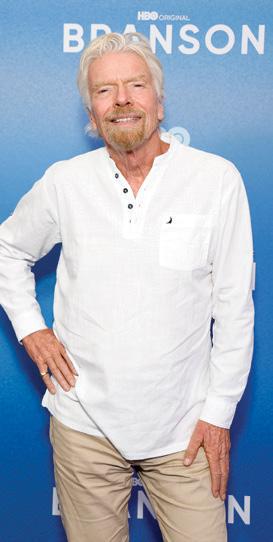
“WHEN THE WHOLE WORLD IS SILENT, EVEN ONE VOICE BECOMES POWERFUL.”
—
“We always overestimate the change that will occur in the next two years and underestimate the change that will occur in the next ten.”
THE BEST WAY TO NOT FEEL HOPELESS IS TO GET UP AND DO SOMETHING . DON’T WAIT FOR GOOD THINGS TO COME TO YOU.”


— RICHARD BRANSON, FOUNDER OF VIRGIN GROUP
— SHEIKH MOHAMMED BIN RASHID AL MAKTOUM, VICE PRESIDENT AND PRIME MINISTER OF THE UAE AND THE RULER OF DUBAI
MALALA YOUSAFZAI, ACTIVIST FOR GIRLS’ EDUCATION
— BILL GATES, CO-FOUNDER OF MICROSOFT
— INDRA NOOYI, FORMER CEO OF PEPSICO
— BARACK OBAMA, 44TH PRESIDENT OF THE UNITED STATES












